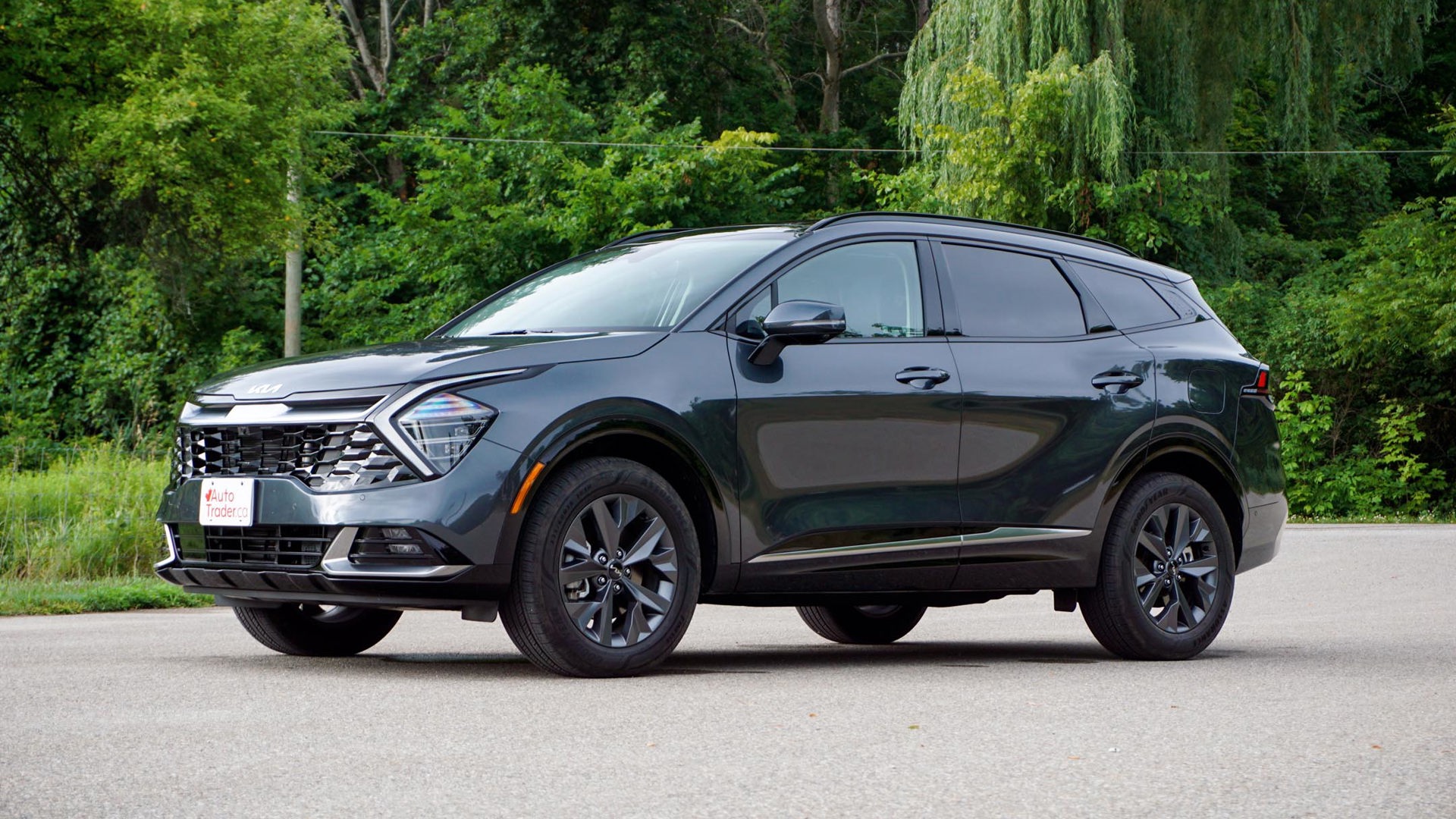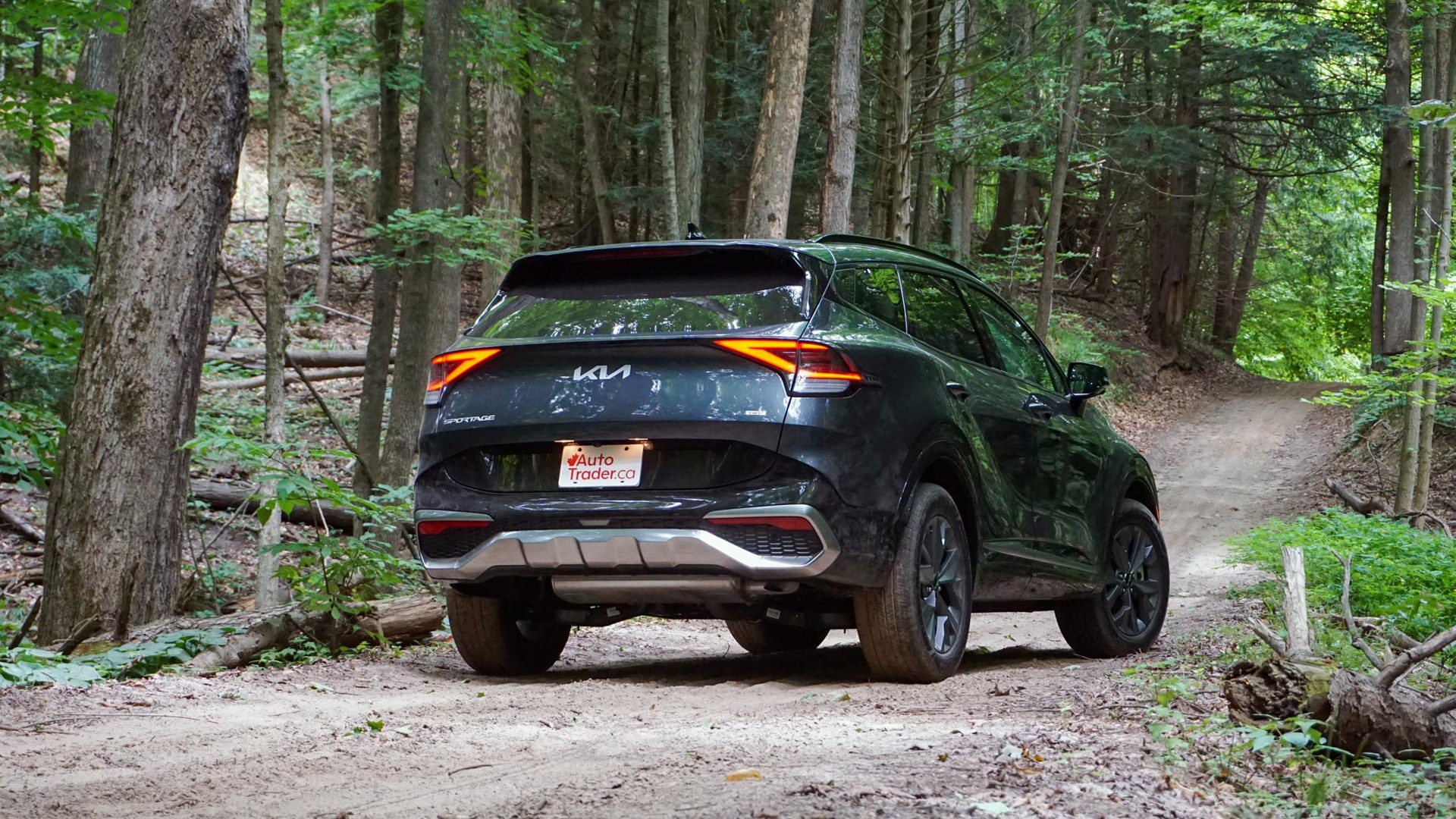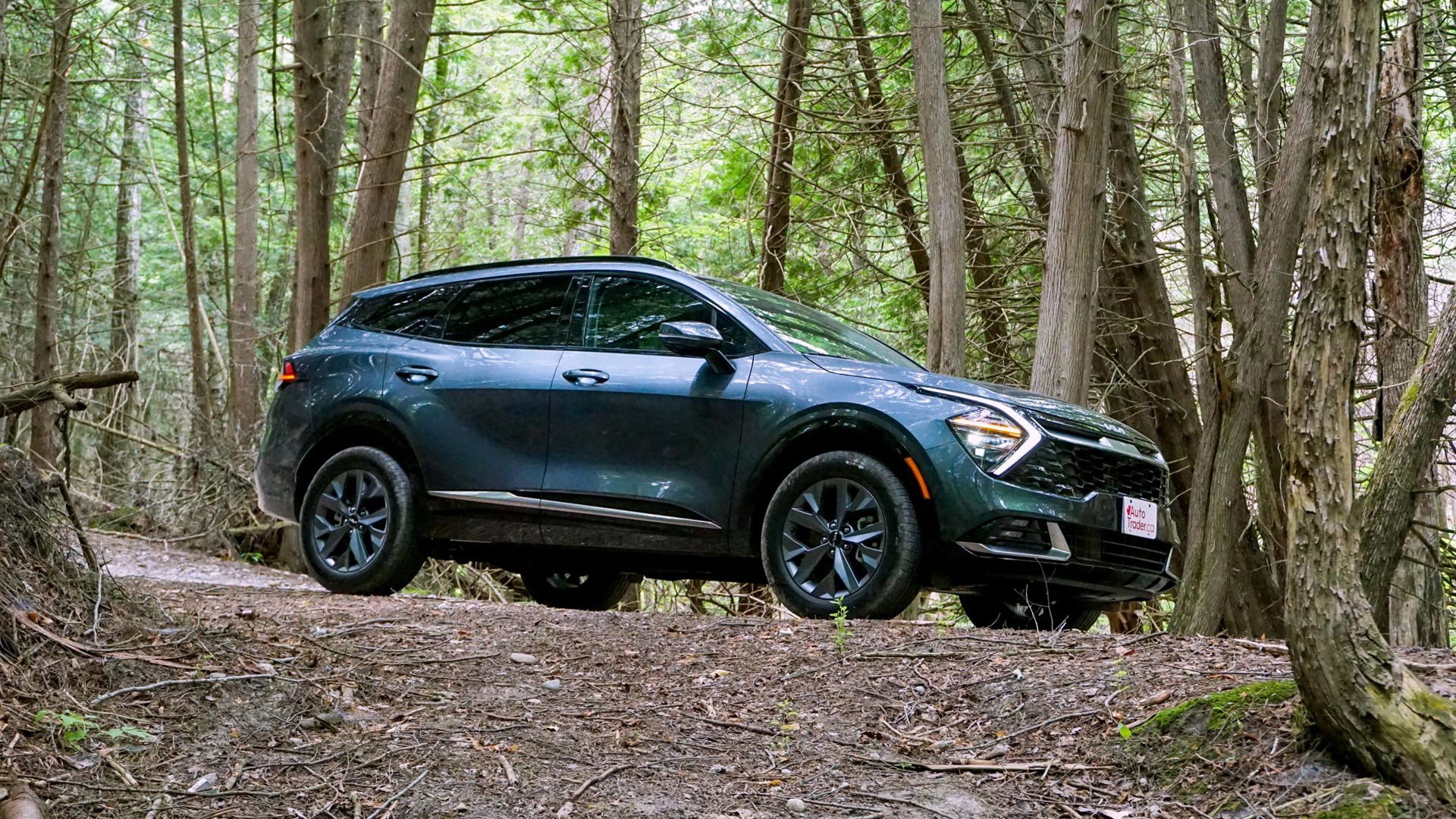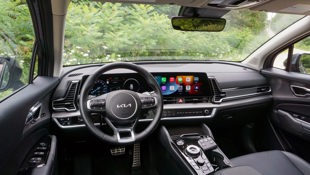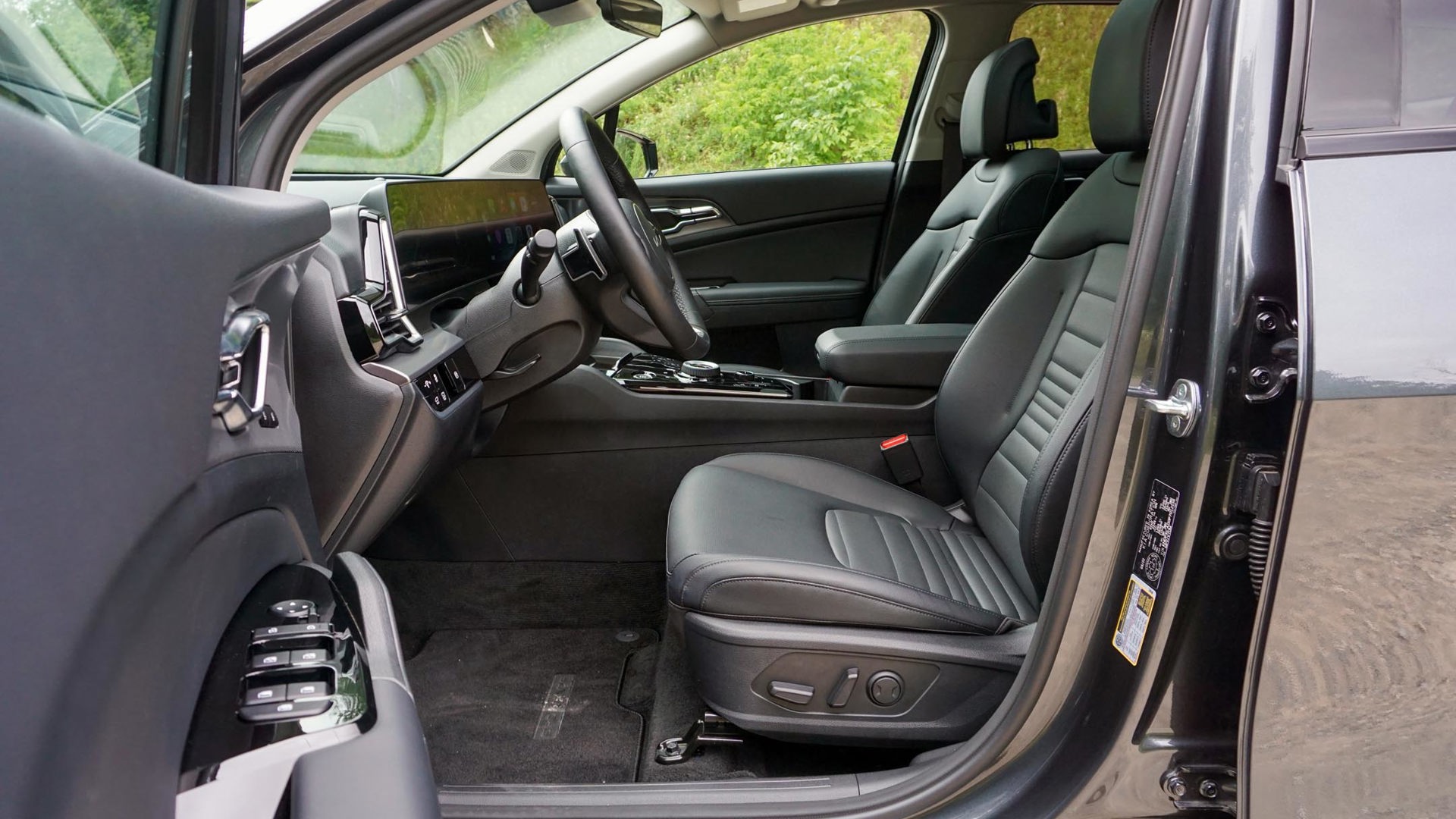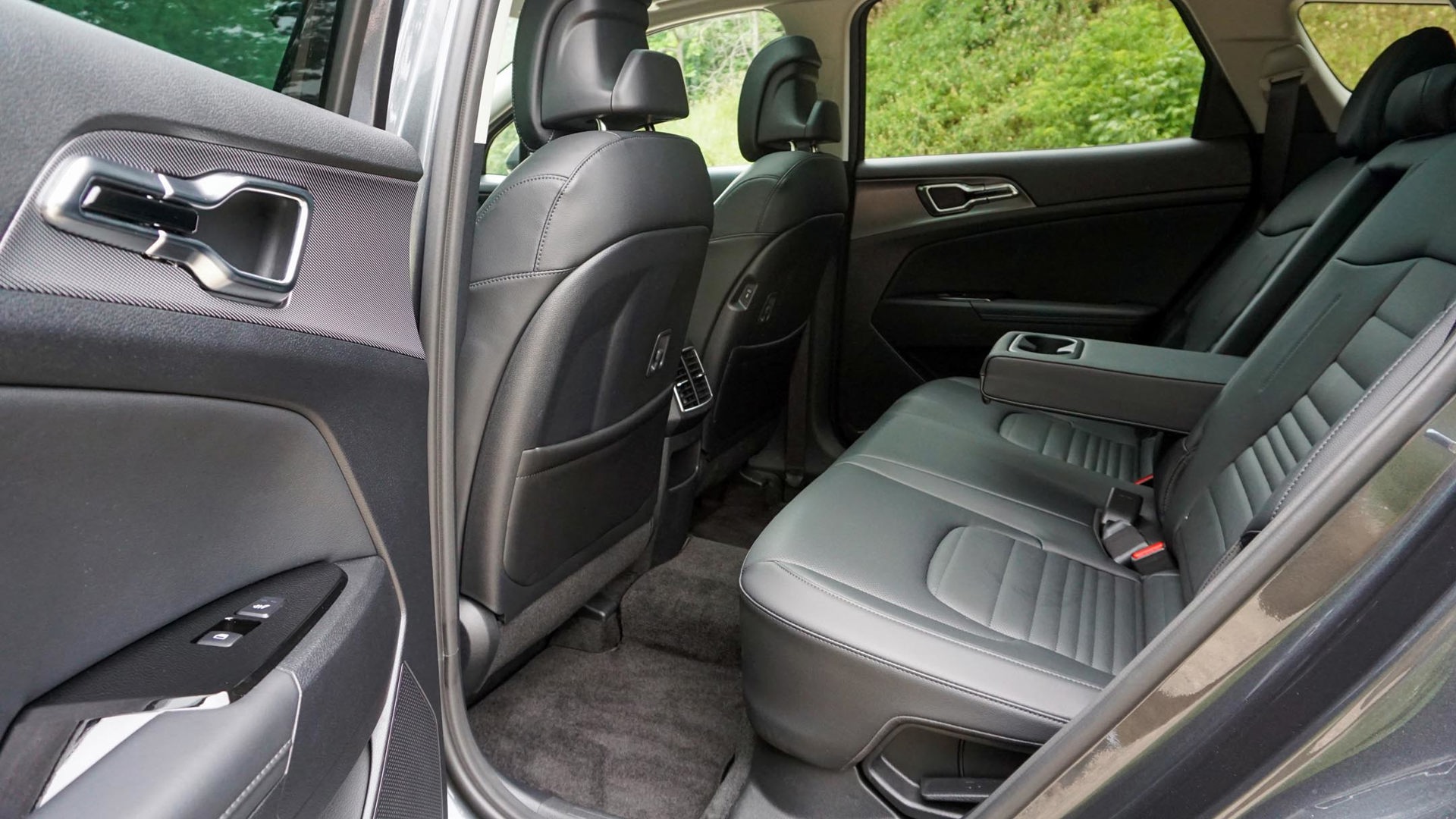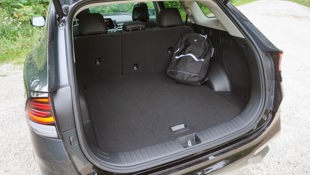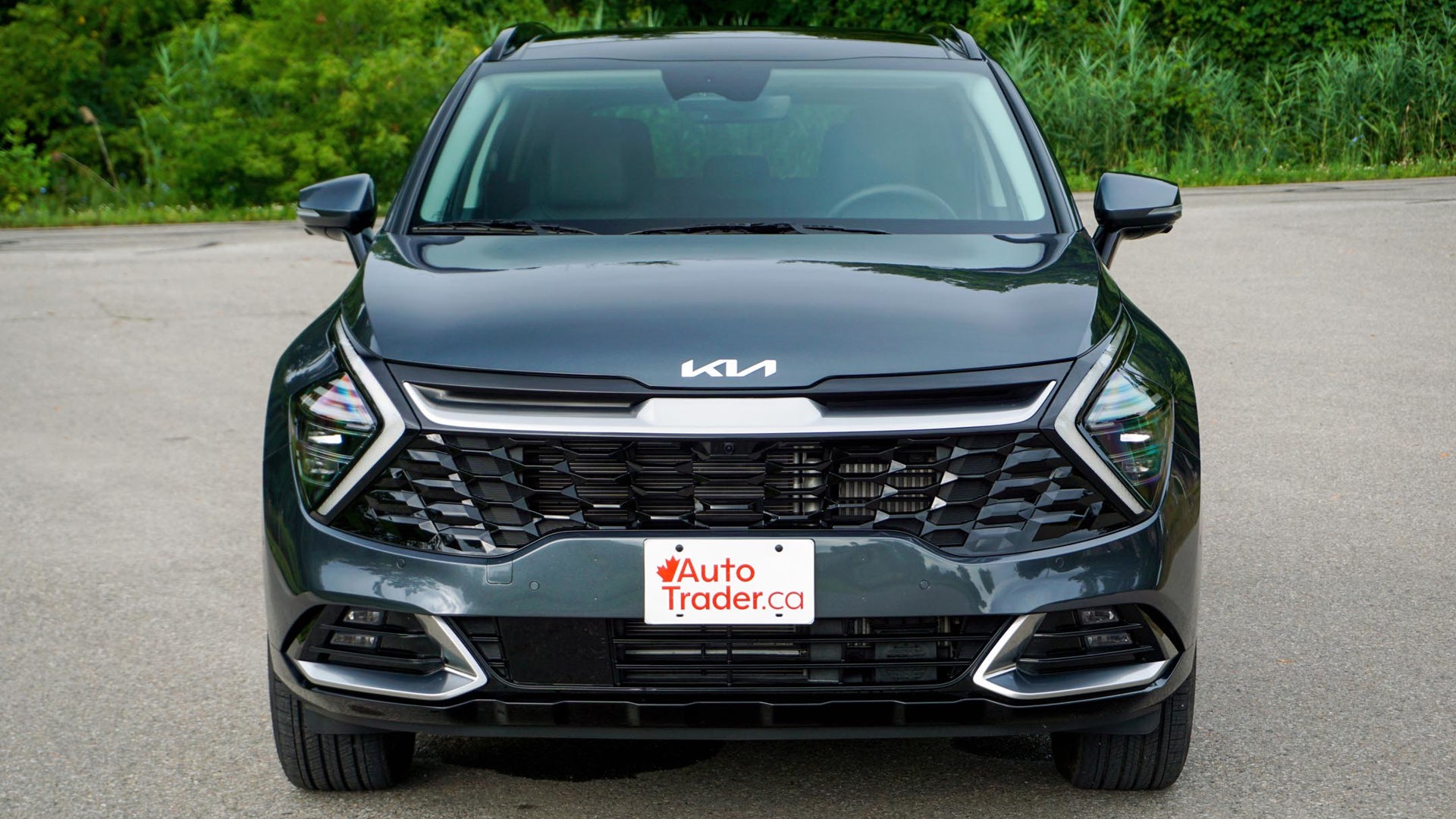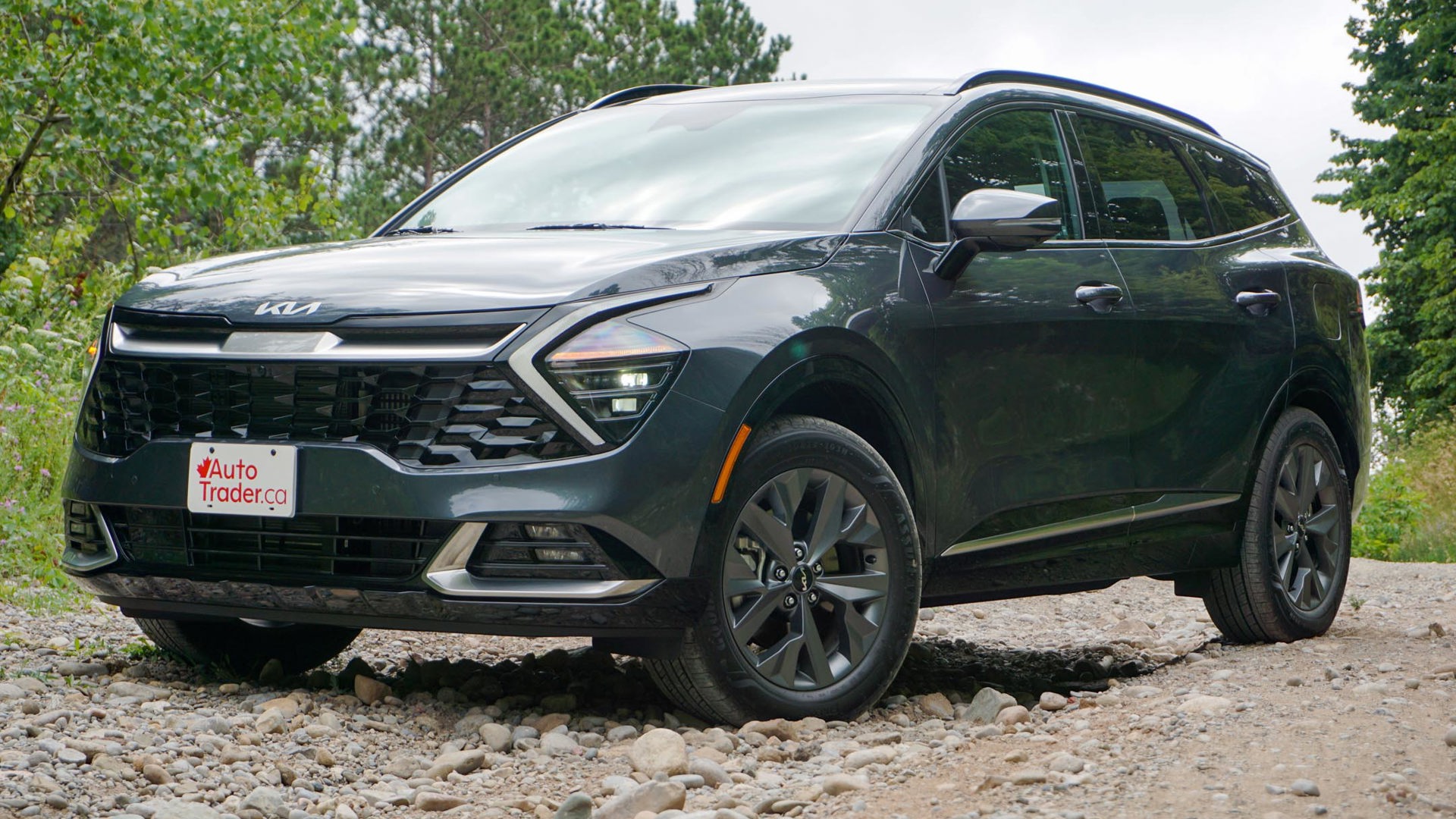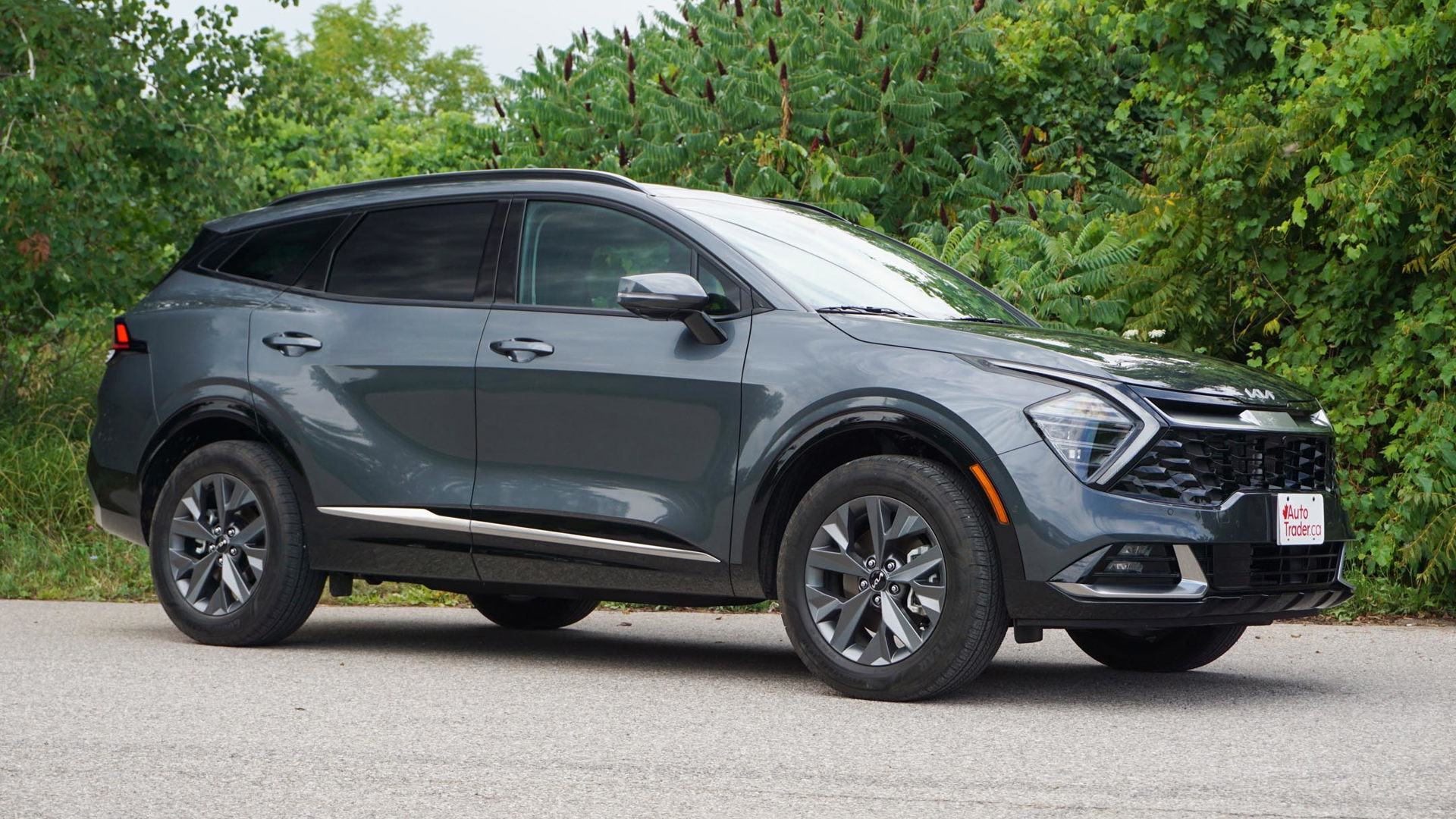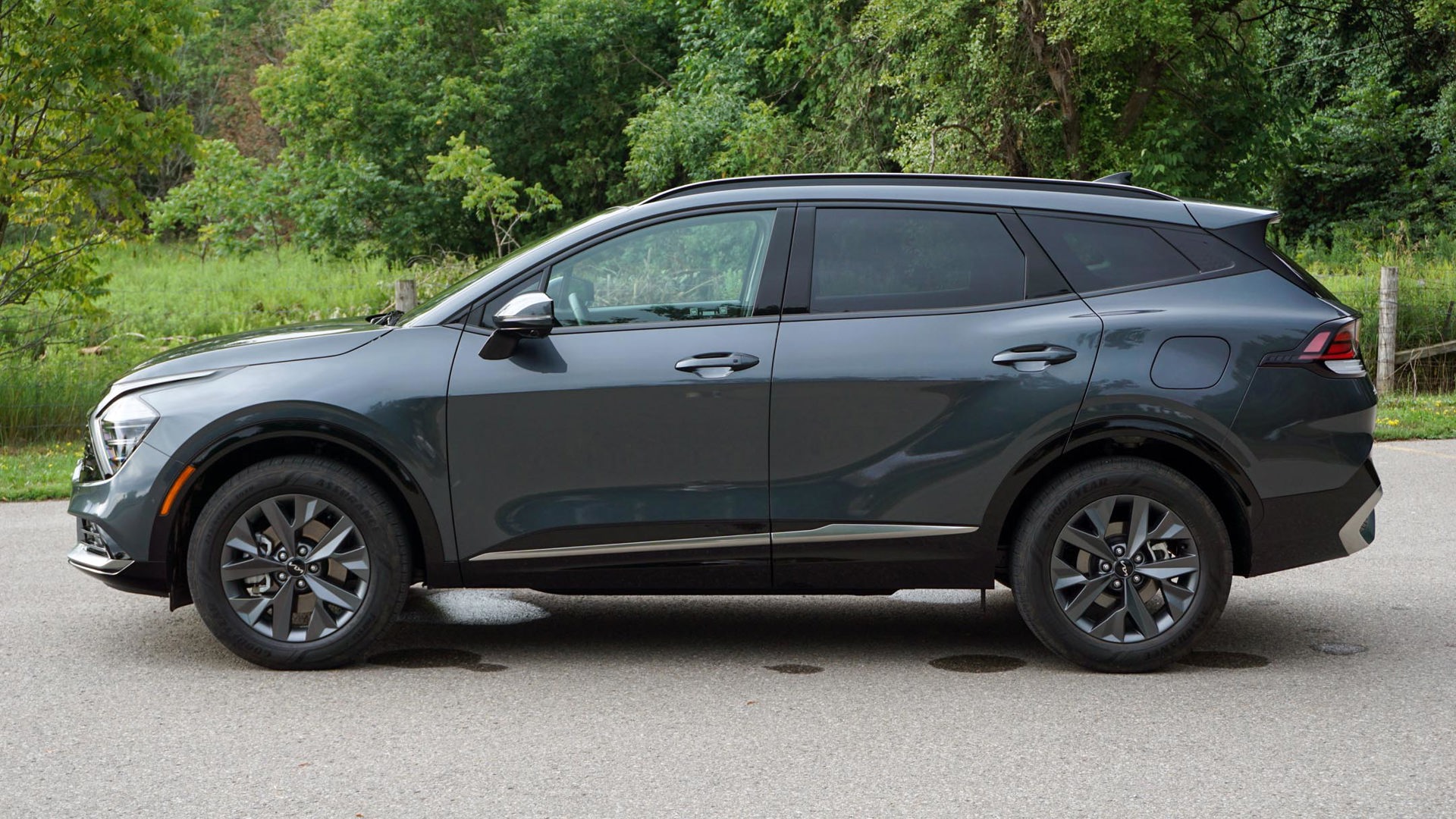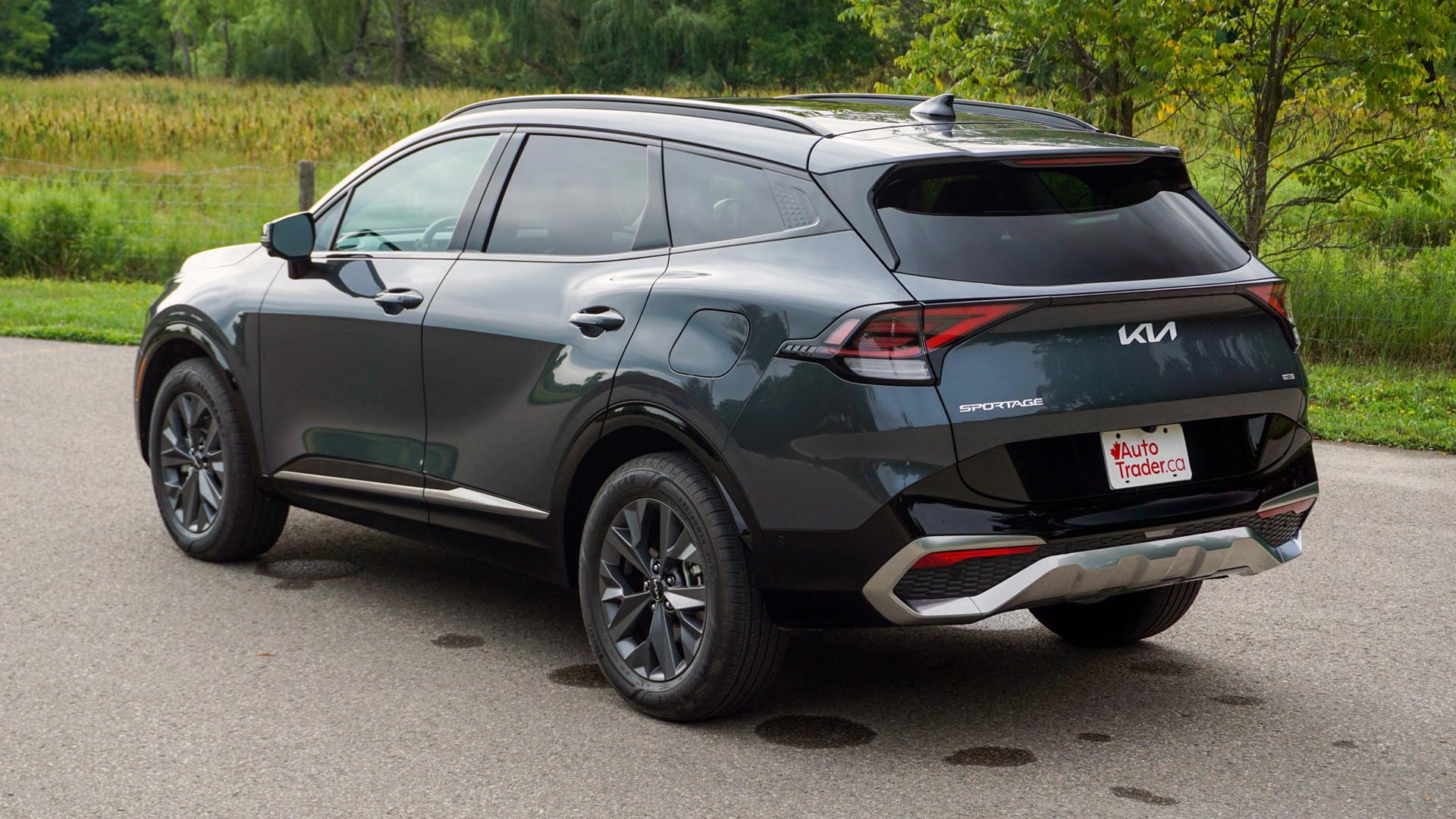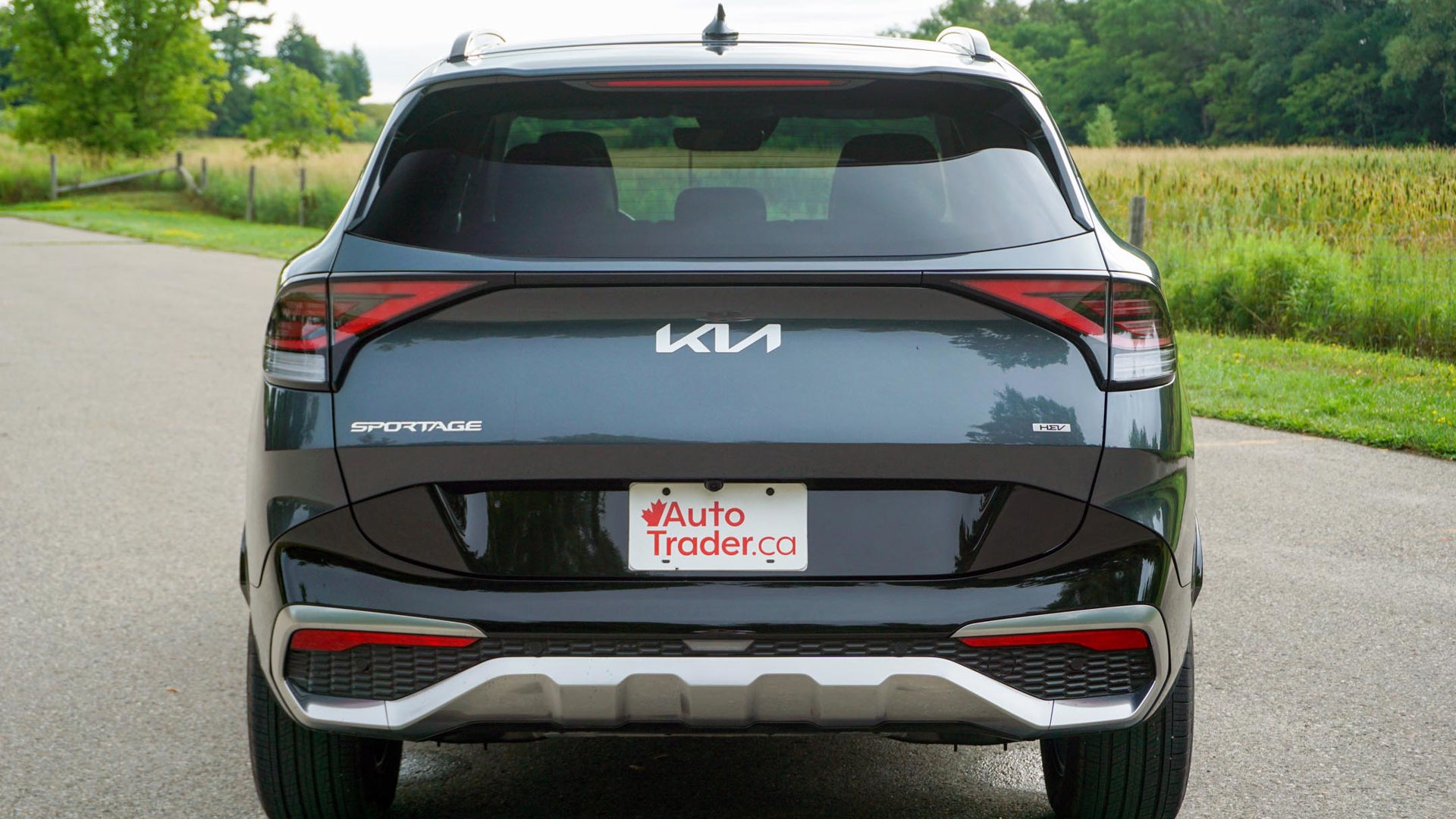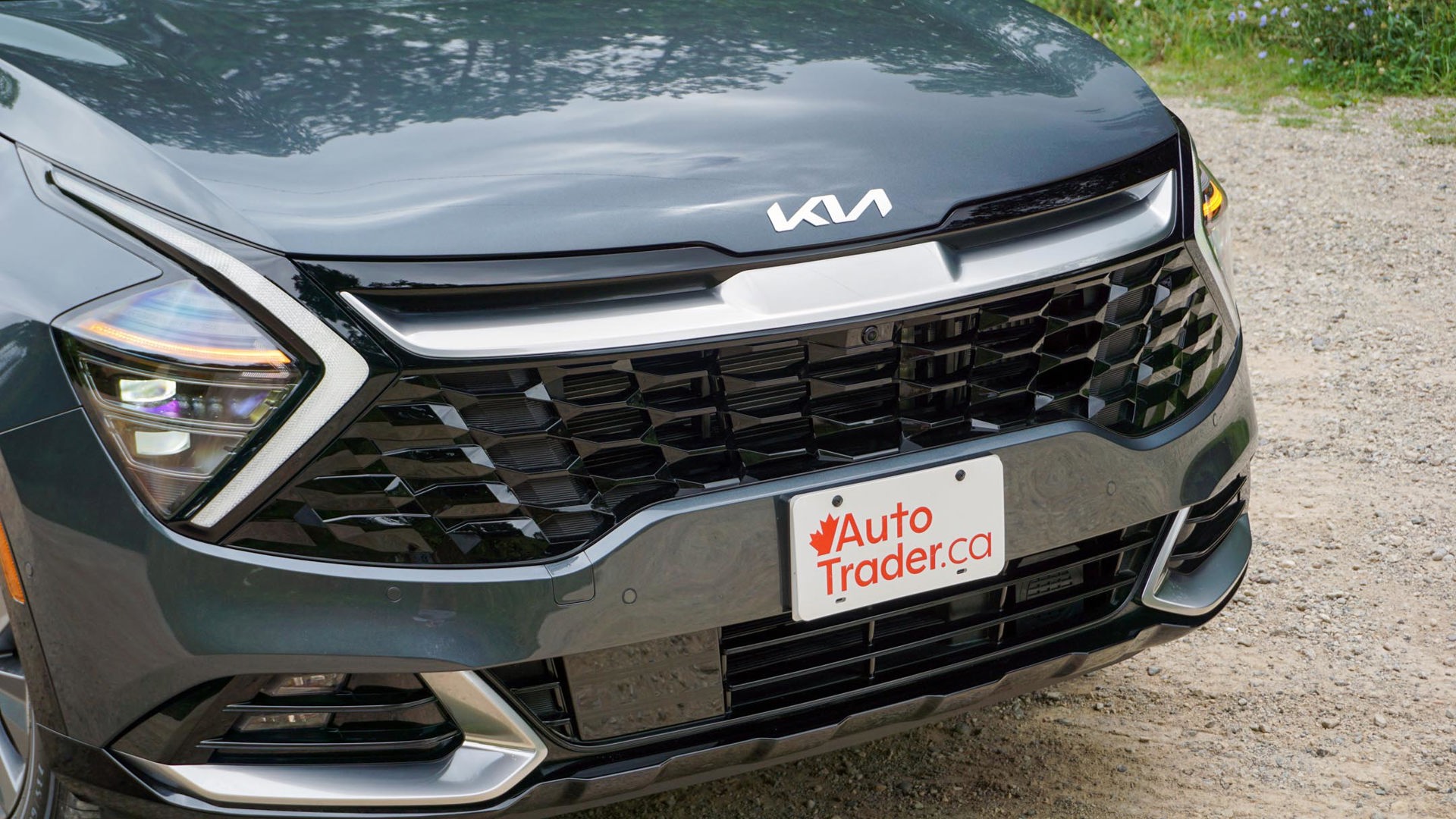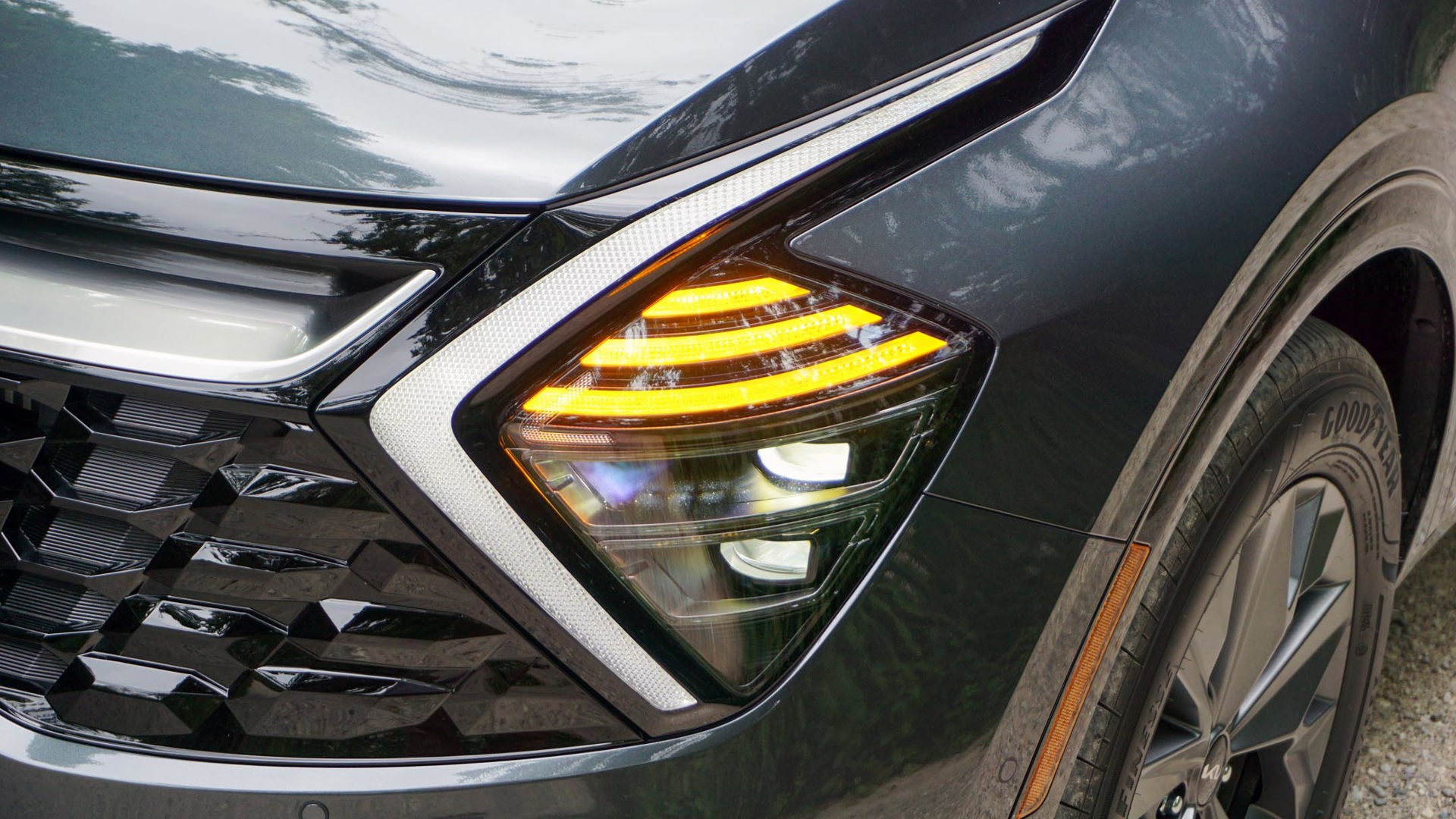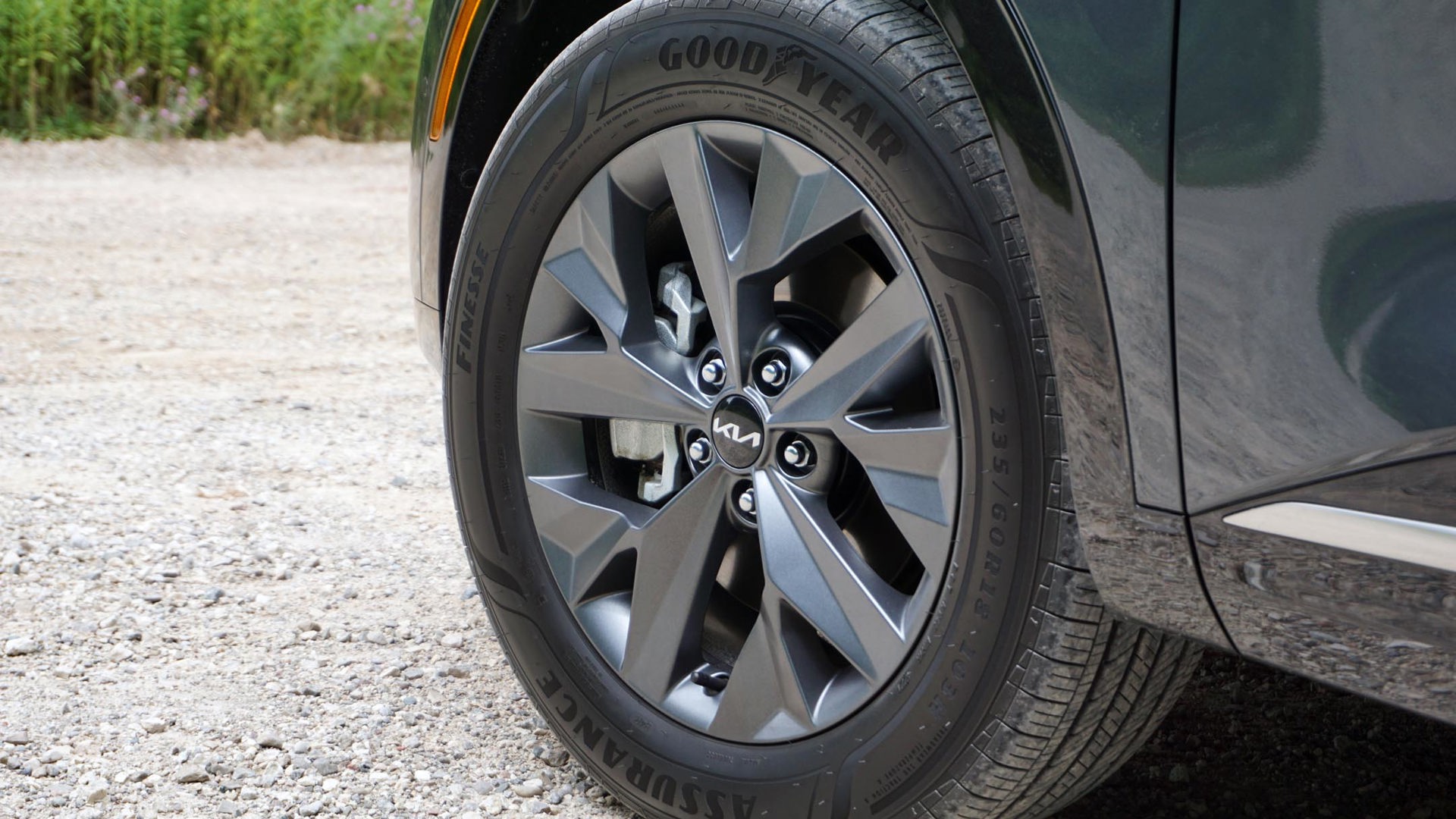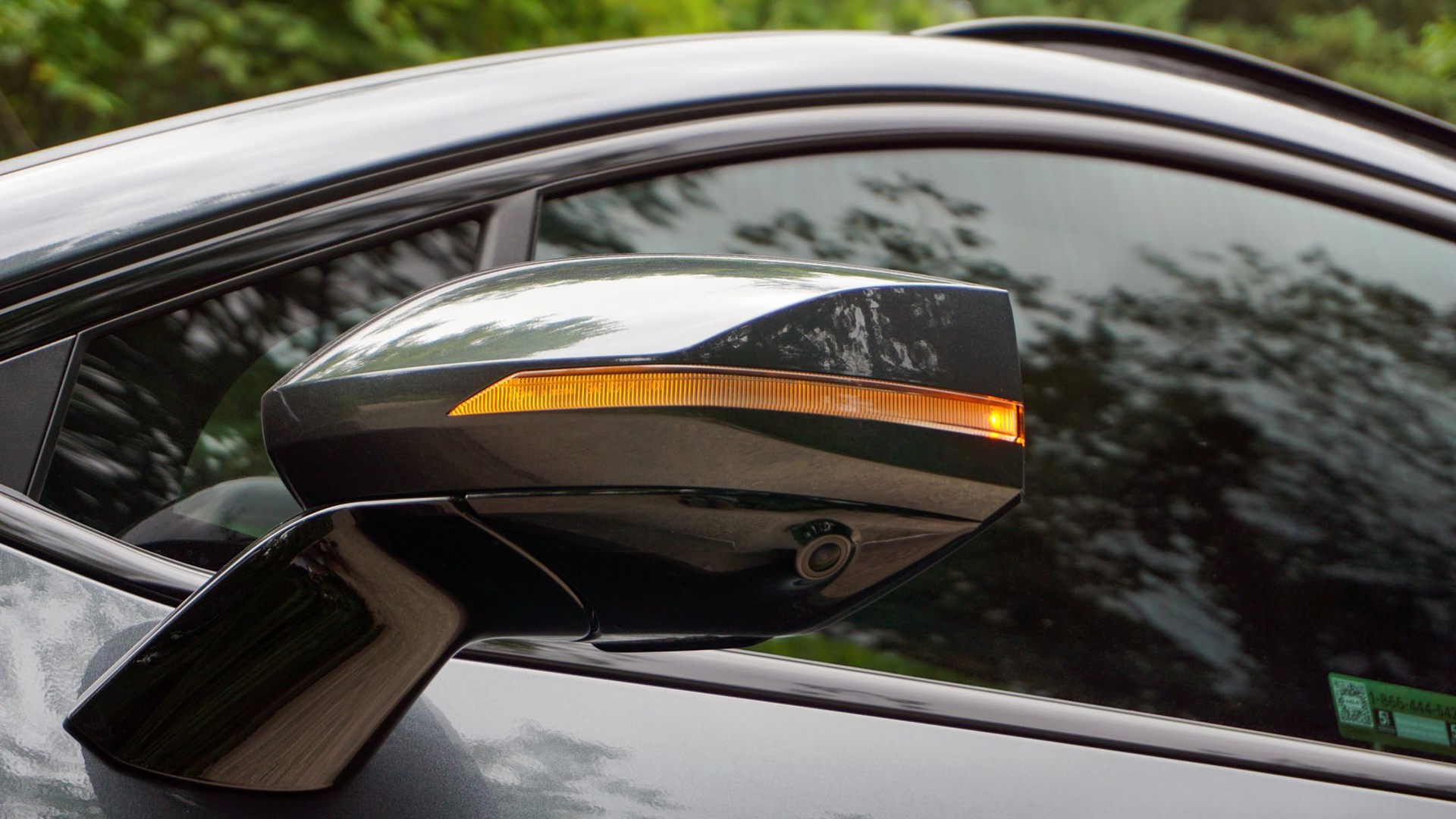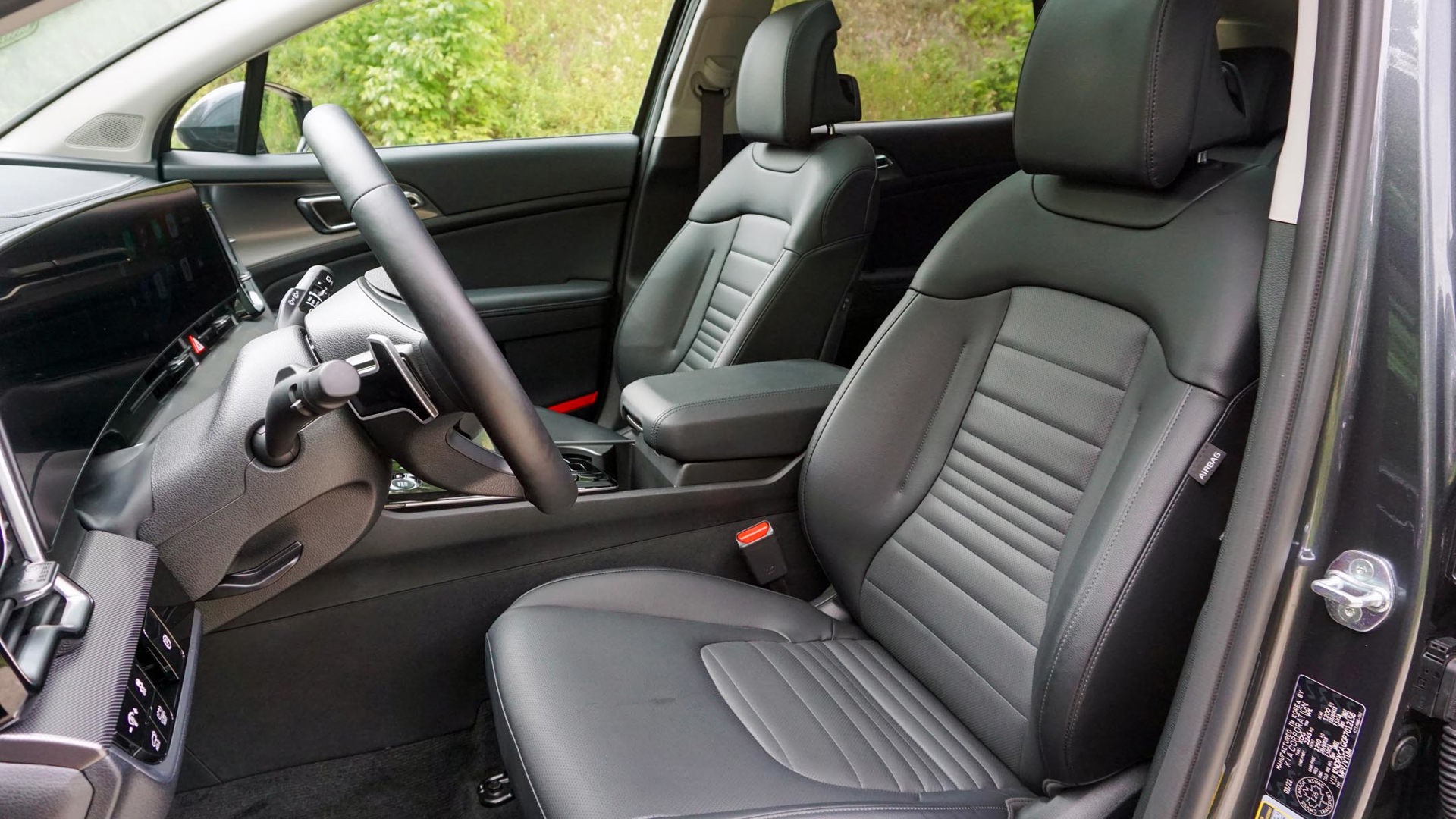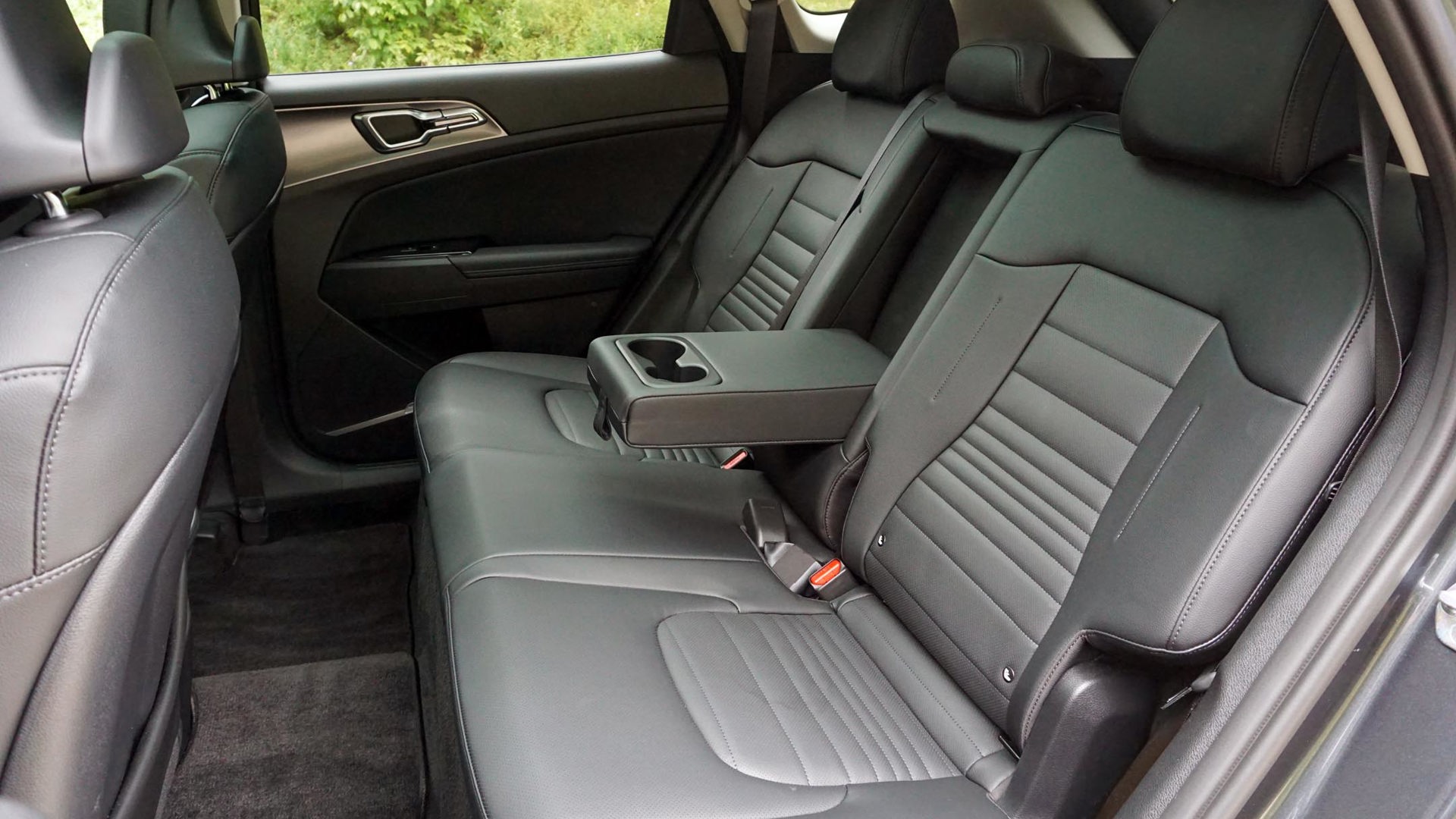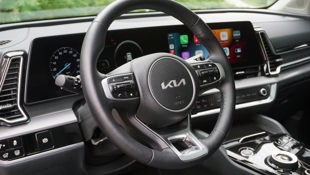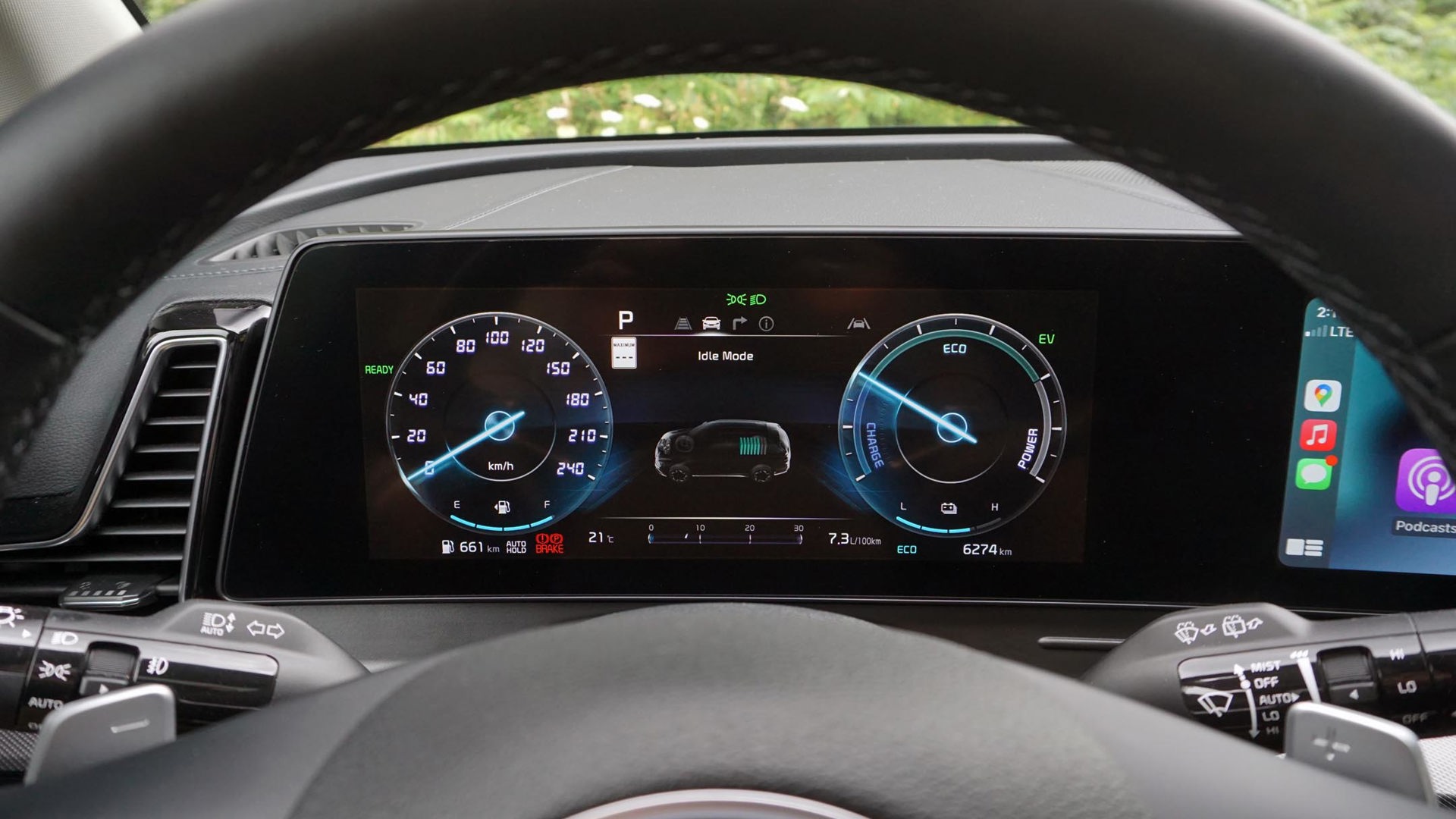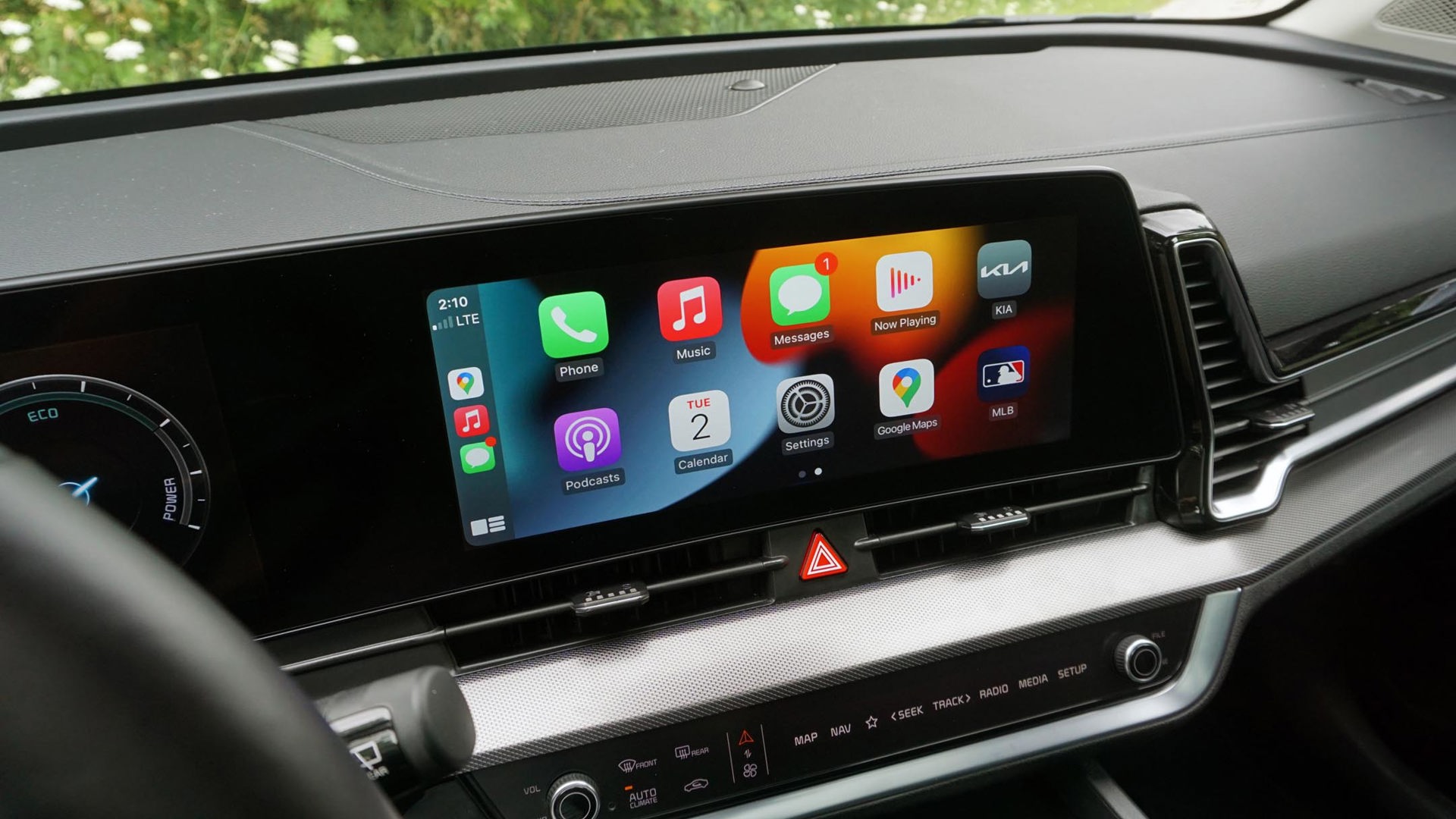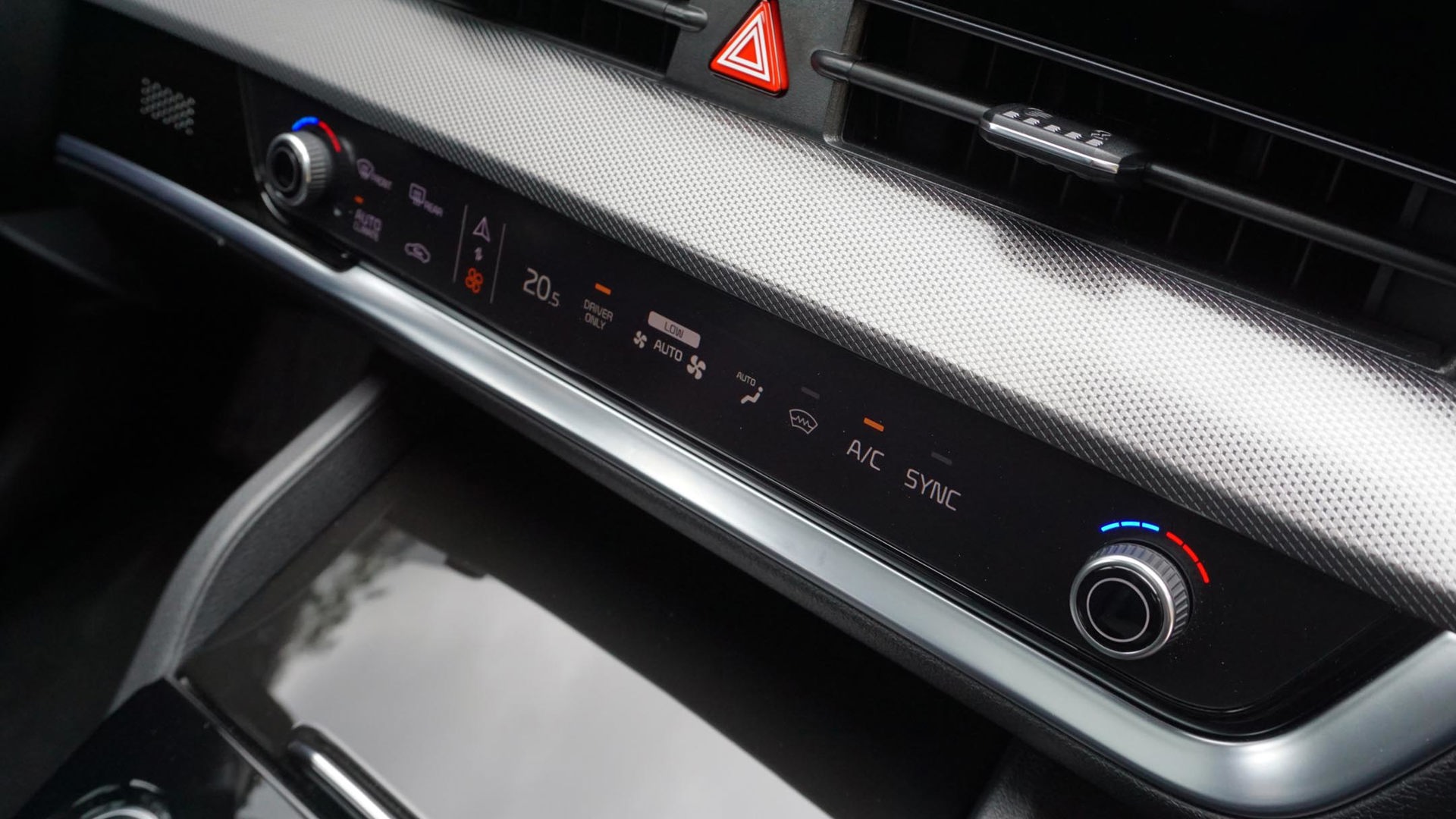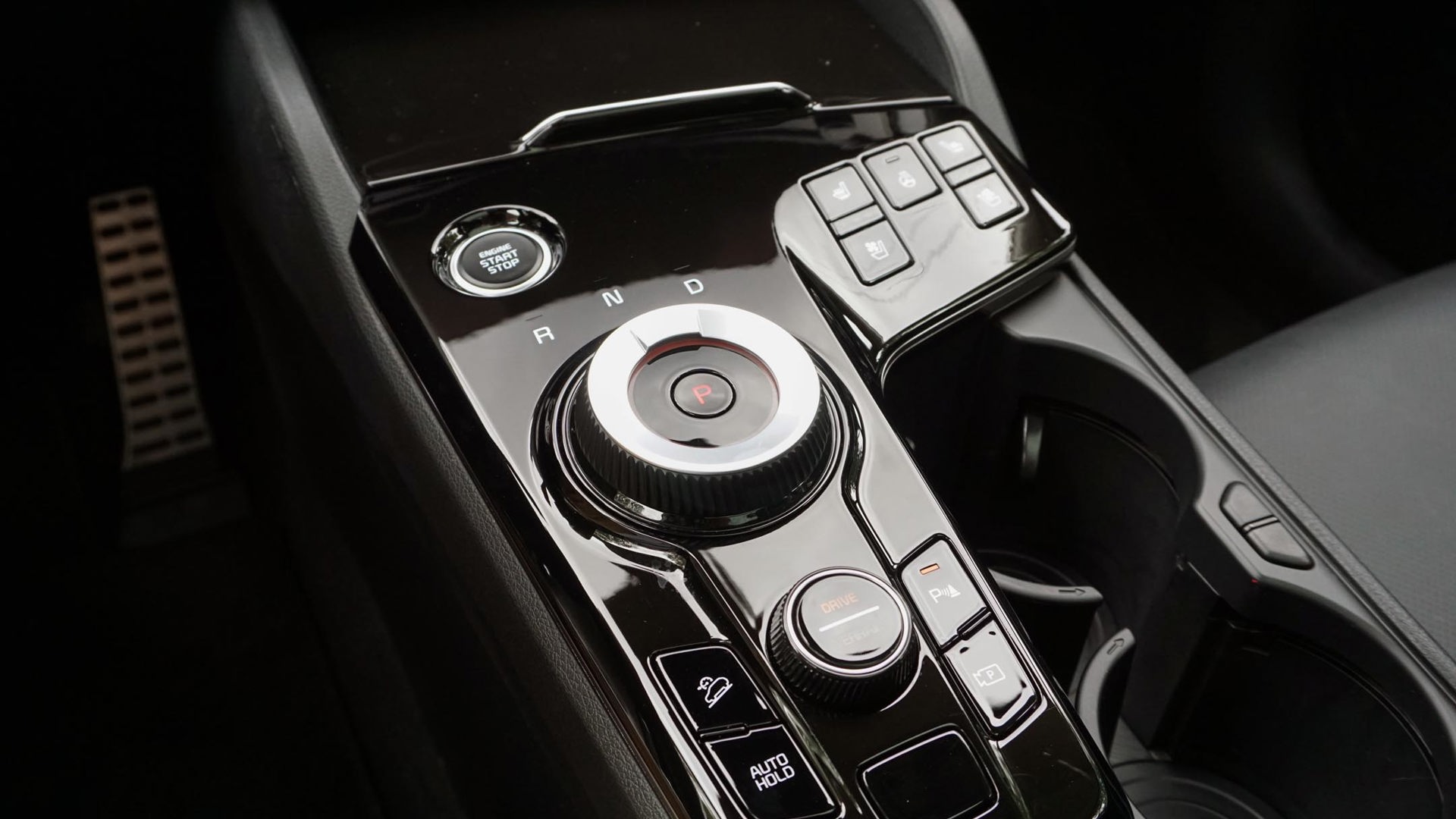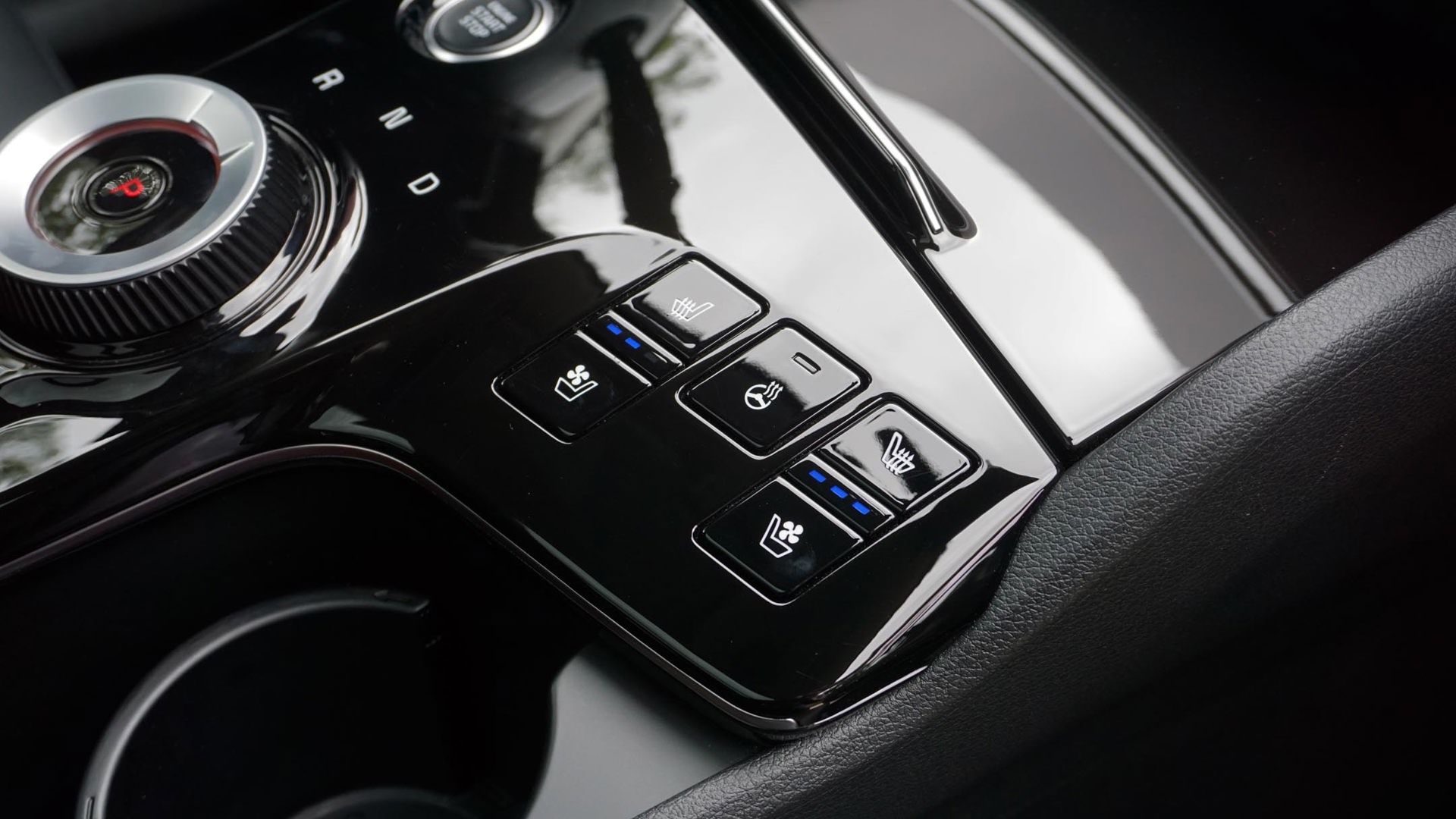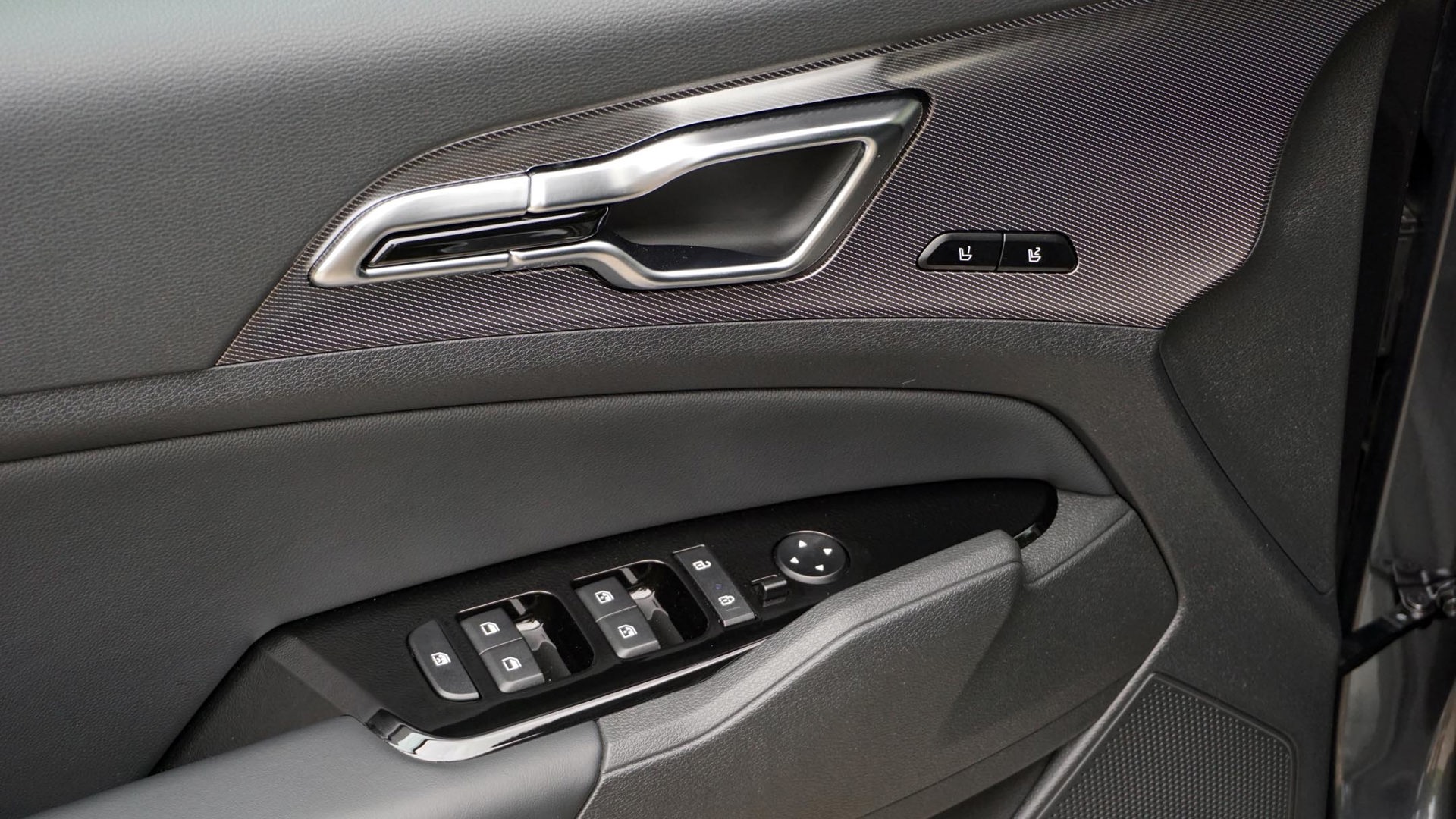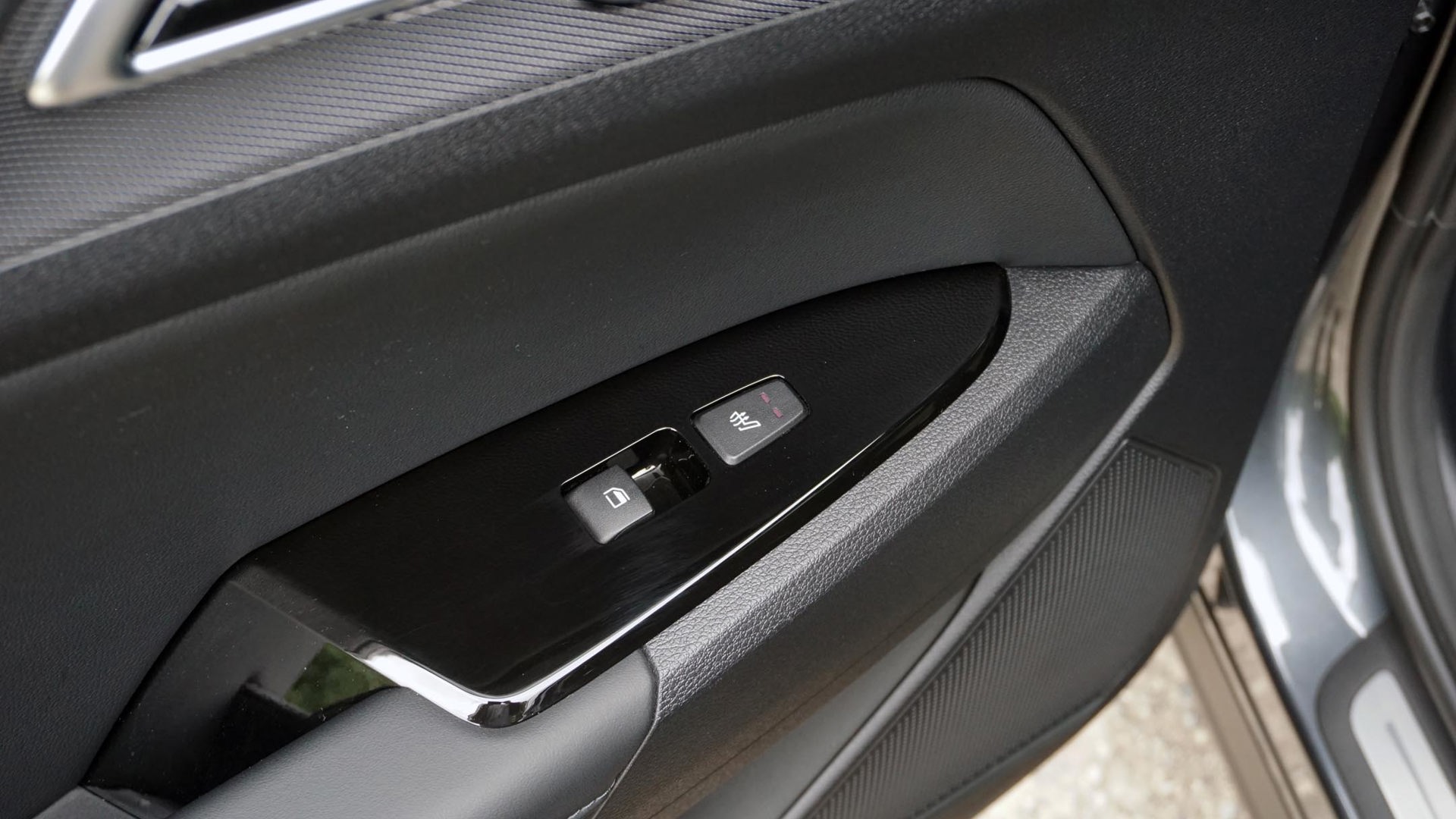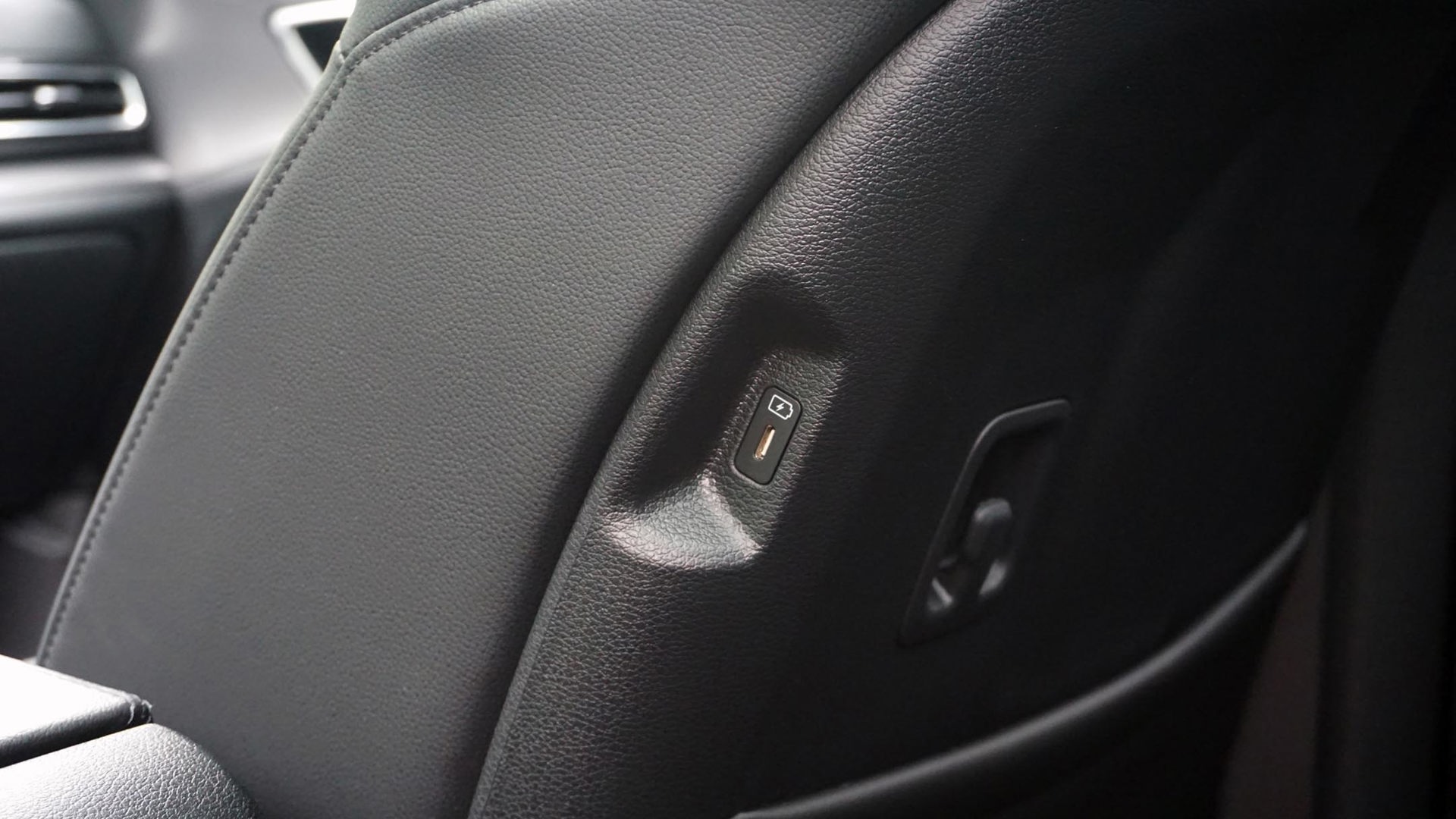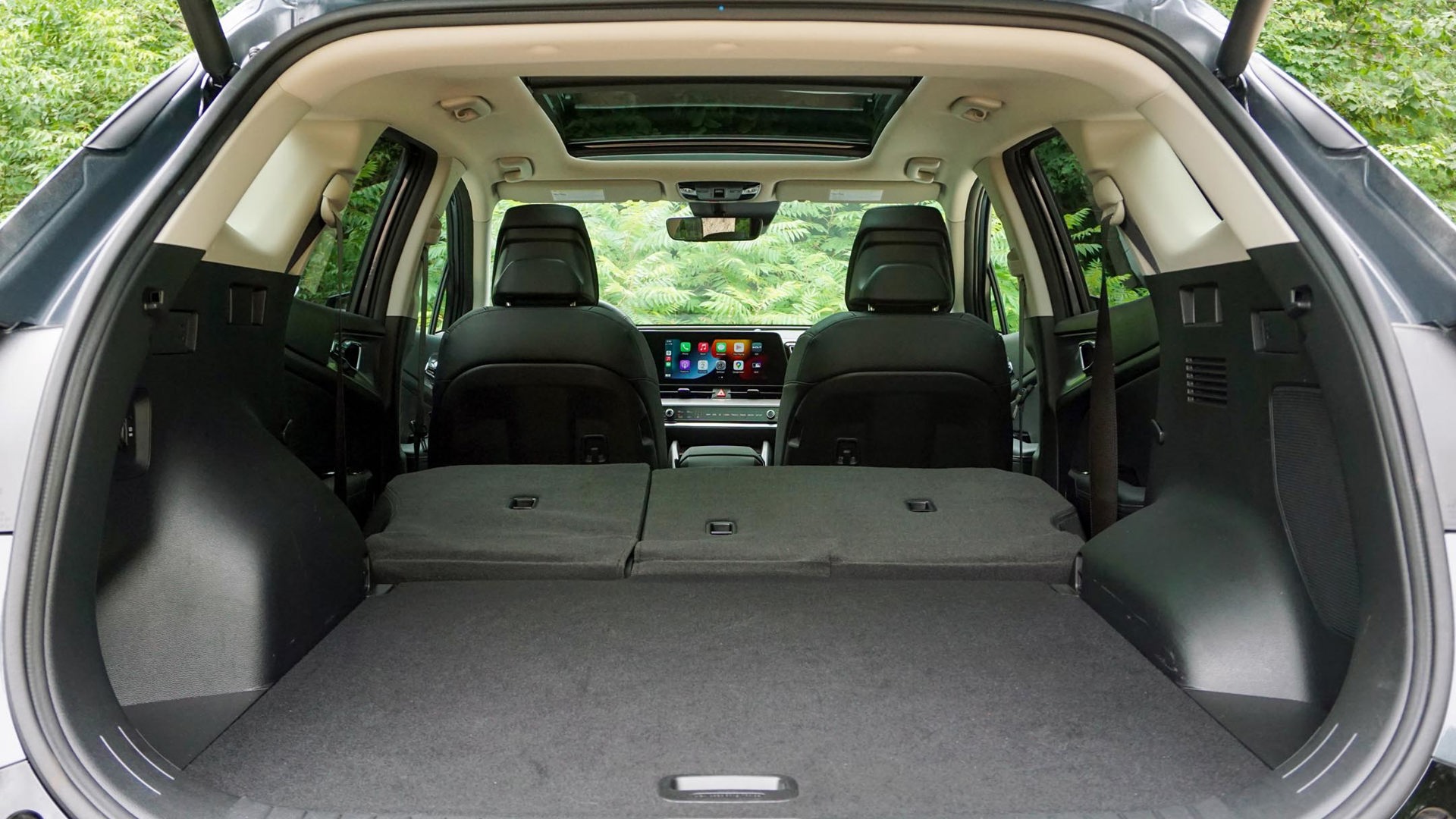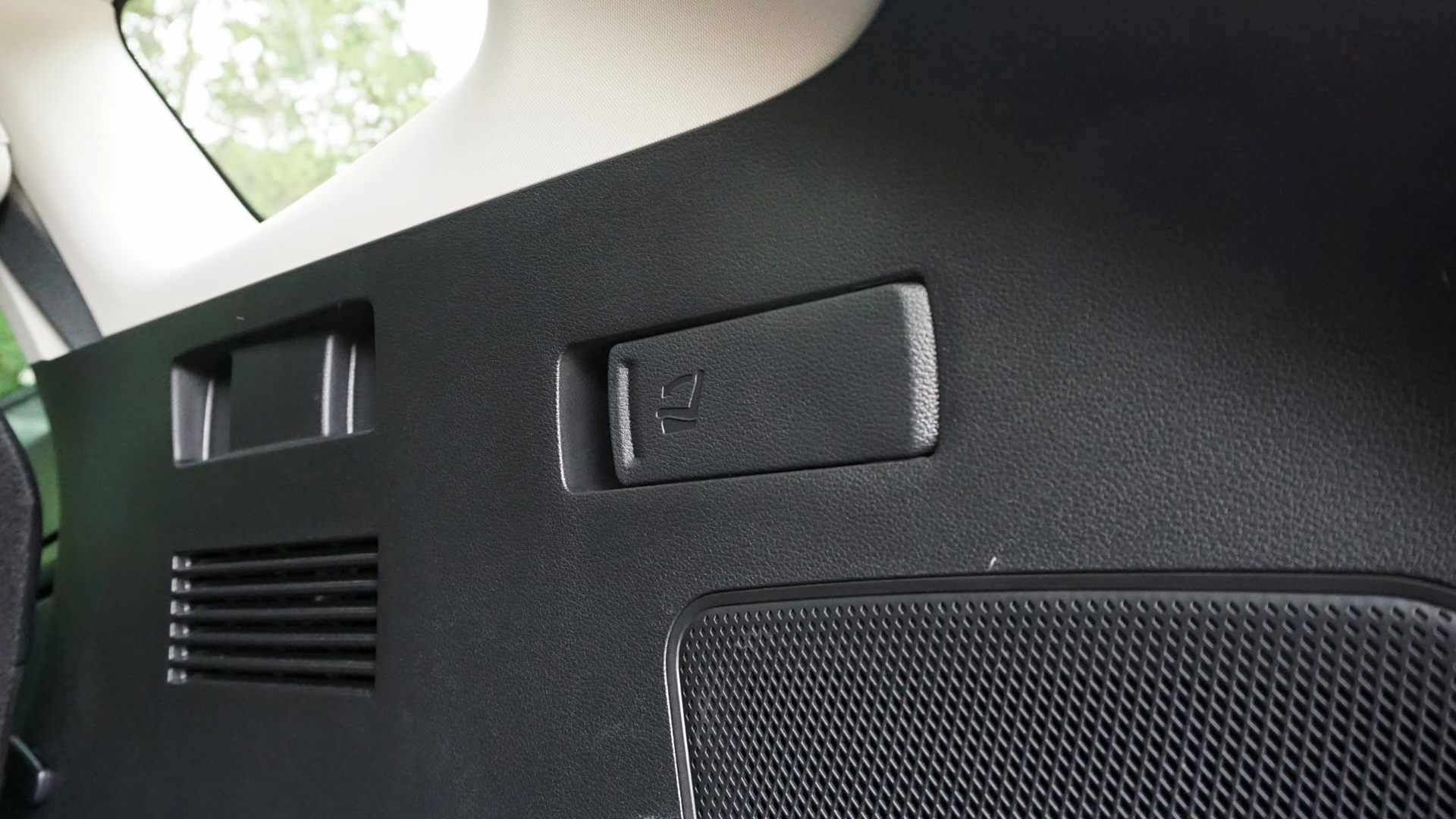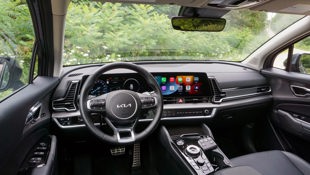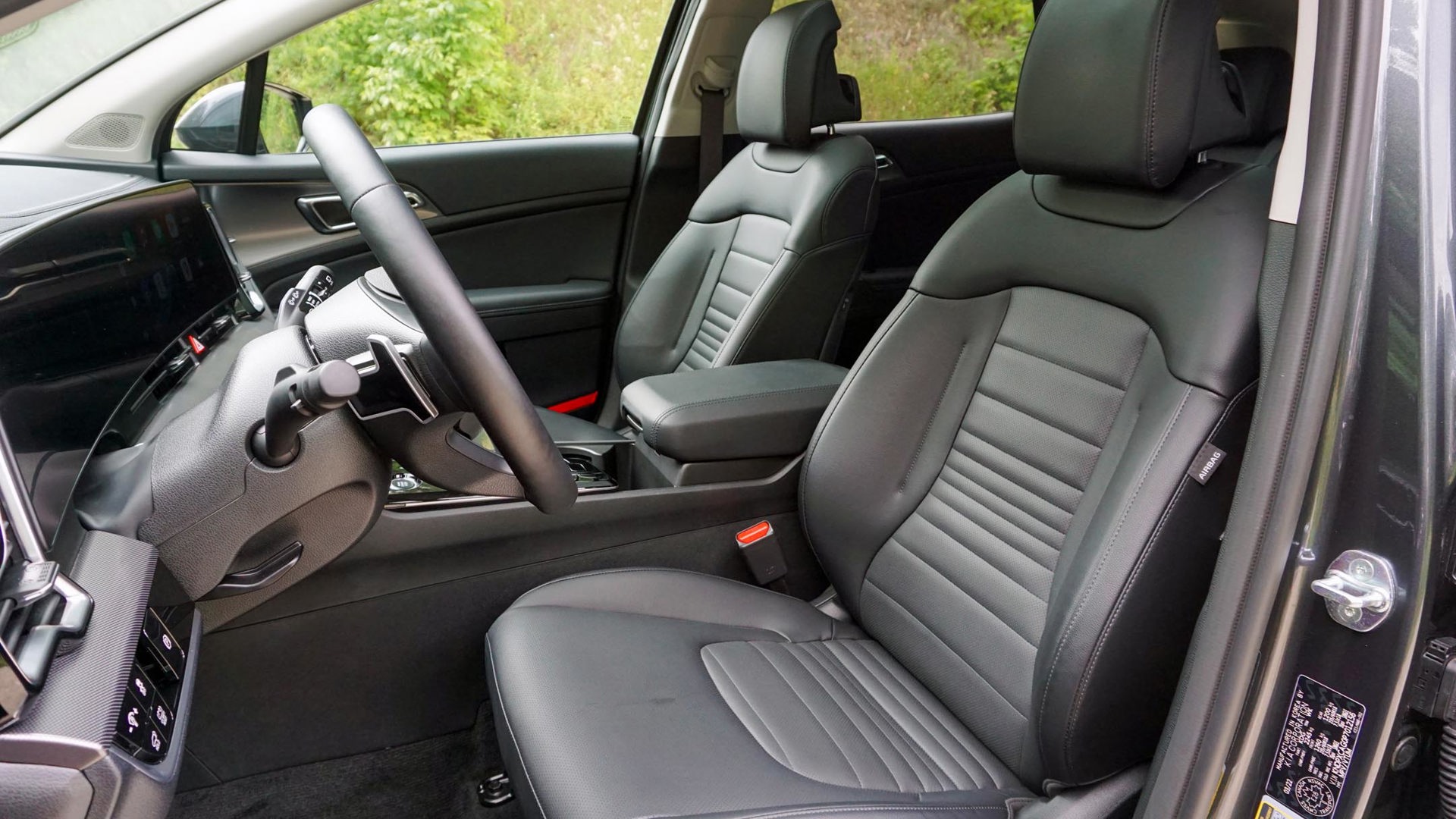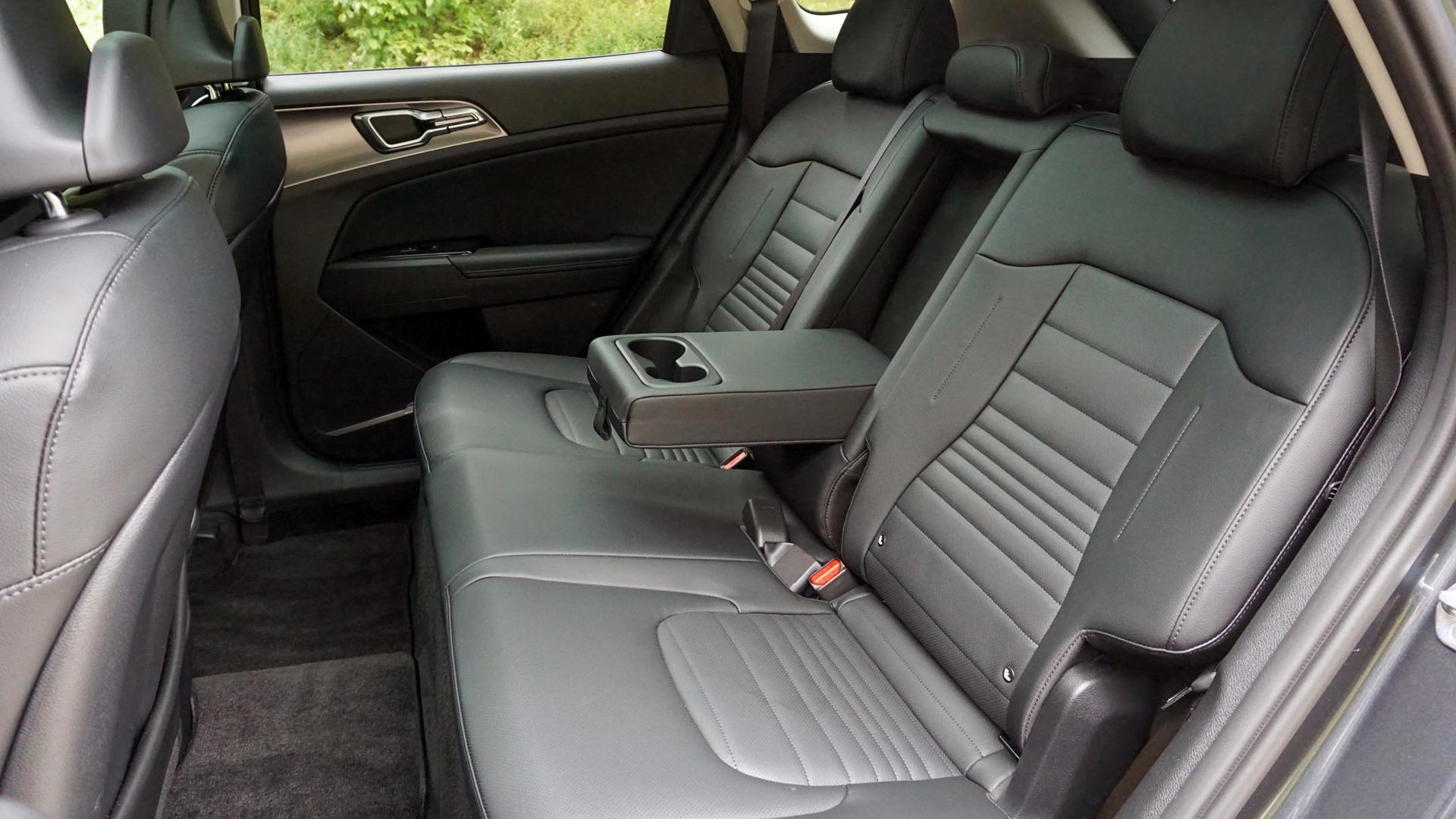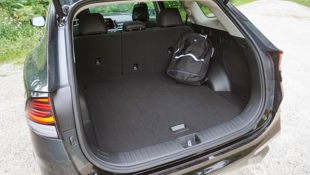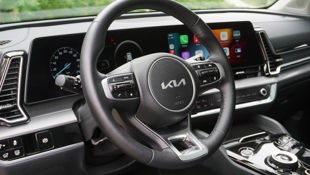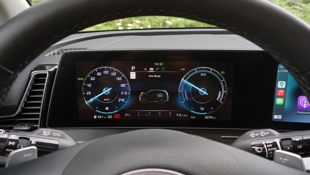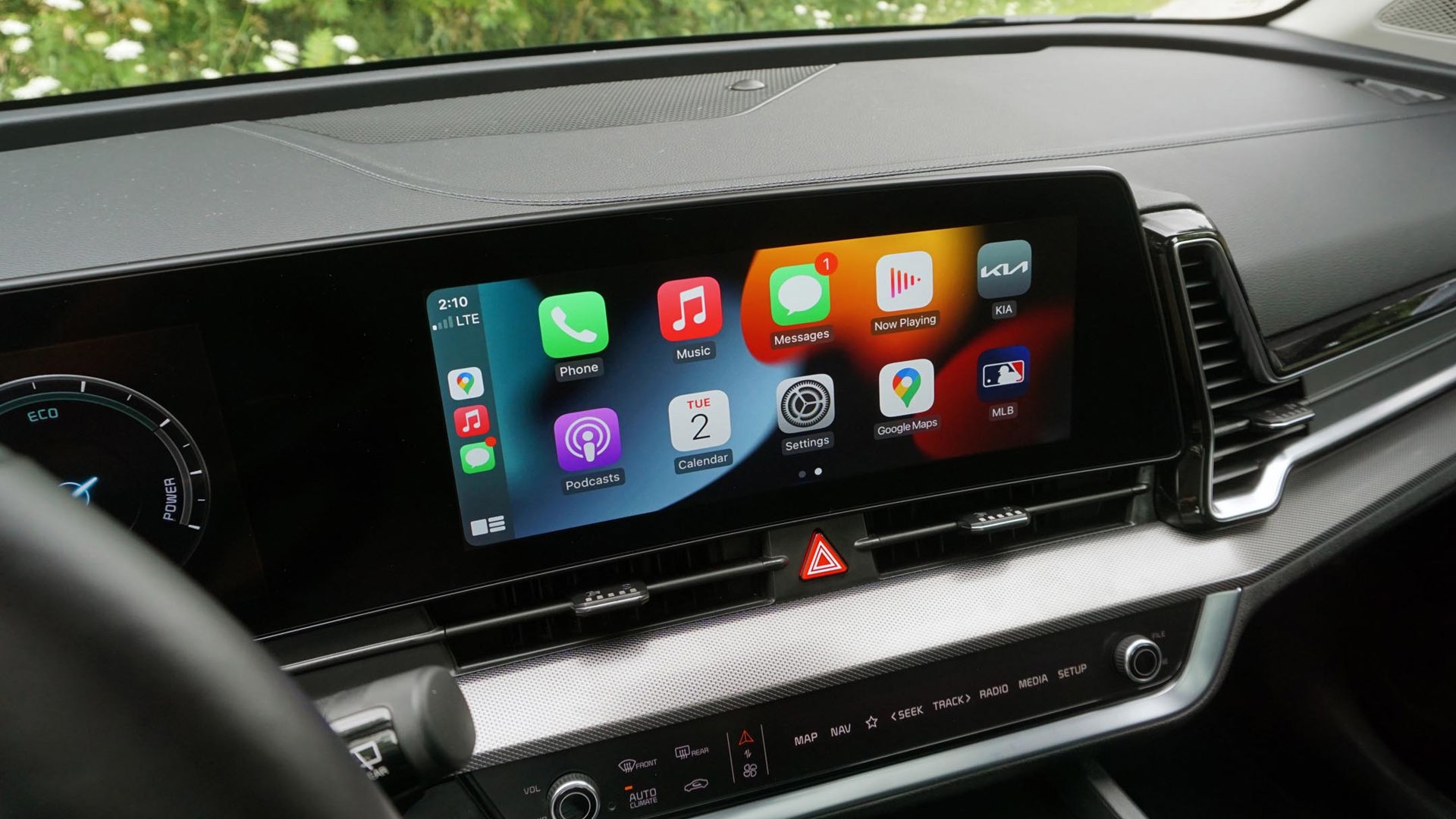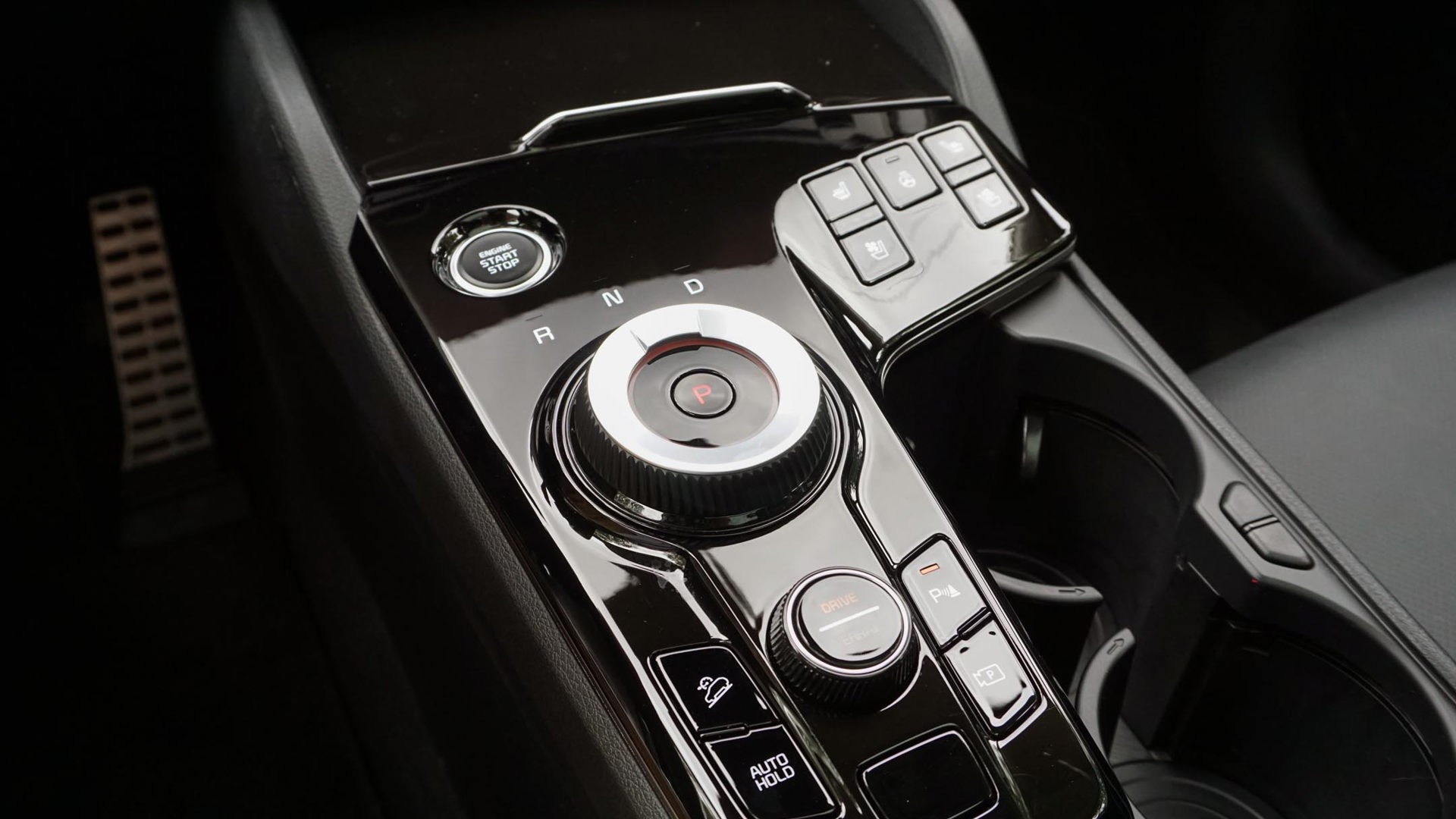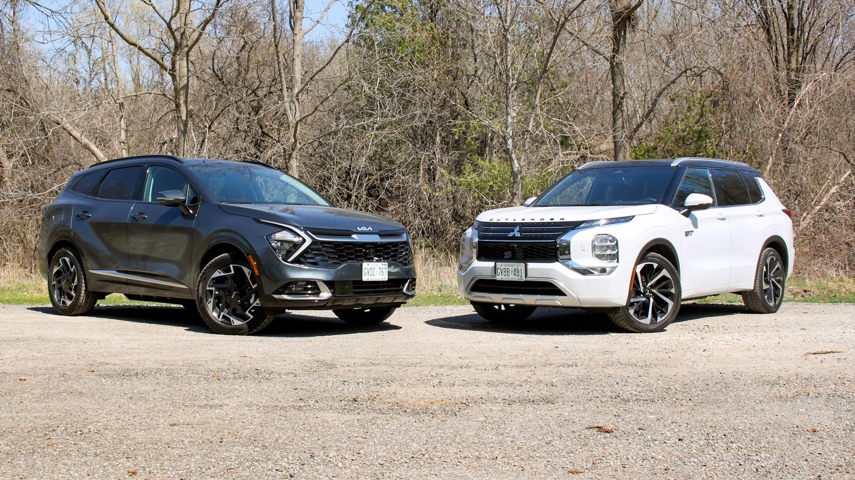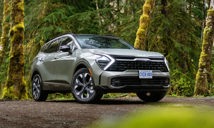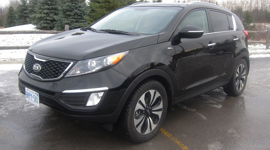 AutoTrader SCORE
AutoTrader SCORE
-
STYLING8/10
-
Safety9/10
-
PRACTICALITY9/10
-
USER-FRIENDLINESS9/10
-
FEATURES9/10
-
POWER9/10
-
COMFORT9/10
-
DRIVING FEEL7/10
-
FUEL ECONOMY8/10
-
VALUE9/10
Hybrid vehicles make sense for the shopper who isn’t quite ready to embrace electrification but is also looking to save at the pumps.
That’s why the 2023 Kia Sportage Hybrid has entered a growing segment of gas-electric SUVs led by the likes of the segment-leading Toyota RAV4. While the conventional hybrid RAV4 has the edge over this Sportage in at least a couple important areas, it’s the bang-for-the-buck Kia has long been known for that closes the gap between them considerably.
Power: 9/10
While it’s fair to credit Toyota with all but pioneering this segment of gas-electric SUVs – not to mention modern hybrids at large – the 2023 Sportage Hybrid is anything but an emulation of the RAV4. It starts with the engine, which is turbocharged rather than the more typical approach of natural aspiration in applications such as this. Going this route leads to a little more peppiness than the average hybrid offers, although it can come across as nearly buzzy and strained as the RAV4 Hybrid under heavy acceleration – mostly due to its small displacement.
The engine is the same 1.6L four-cylinder Kia and compatriot brand Hyundai have been using for the past few years in smaller applications including the subcompact Seltos. It makes 177 hp and 195 lb-ft of torque on its own, while the electric motor it’s paired with chips in with another 59 hp and 195 lb-ft. Net system output, meanwhile, which is the measure of the peaks at which they can operate simultaneously, is 227 hp and 258 lb-ft of torque.
Driving Feel: 7/10
Also separating the Sportage from its Toyota forebear is the way it gets that gas-electric output to the wheels. Rather than a continuously variable transmission (CVT) it relies on a conventionally geared six-speed automatic, while the standard all-wheel drive setup is of the mechanical variety. Along with all that turbocharged torque, those drive-related components result in what will come across as fairly conventional behaviour for those making the switch to hybrid power for the first time.
The 2023 Sportage shares a platform with the latest version of the slightly larger Kia Sorento, which can also be had with hybrid or plug-in hybrid (PHEV) power. There’s a similar stiffness to its predecessor, which is fairly common amongst Kia’s offerings, and it supersedes most of the softness that’s been dialled into the suspension. It’s not necessarily uncomfortable, but the ride isn’t quite as refined as that of the RAV4 or similarly sized Ford Escape Hybrid – one of the few areas the Sportage comes up short of its rivals.
Where engineers took the Sportage in a different direction than the one that came before is the steering, which is disappointingly dull. It’s not as if a sport utility like this one should feel sporty, but this level of lifelessness doesn’t lead to much confidence when cornering.
Fuel Economy: 8/10
Another way in which this Sportage trails its competitors from Toyota and Ford is at the pumps. Granted, its official combined consumption rating of 6.2 L/100 km isn’t far off the marks set by the RAV4 Hybrid (6.0) and Escape Hybrid (5.9); but if outright efficiency is leading the list of reasons to buy a small sport utility like this, the Sportage ranks a not-too-distant third.
Real-world returns were just about in line with expectations set by Kia, with an initial evaluation drive spanning approximately 175 km finishing at 6.4 L/100 km. Meanwhile, the full week-long test ended with a combined consumption of 6.5 across a total of about 580 km. The Sportage Hybrid runs on regular-grade gas.
Practicality: 9/10
While the previous Sportage counted among the smallest entries in the segment, this new one has been catapulted towards the top. While the version sold in Europe more closely mirrors the size of the last generation, at 2,755 mm (108.5 in) the new wheelbase is some 85 mm (3.4 in) longer than before, while overall length has been stretched 180 mm (7.1 in) to 4,660 mm (183.5 in).
Those dimensions make it slightly larger than the RAV4. More than that, though, they translate directly into more space in the back seat. The 1,050 mm (41.3 in) of legroom far outstrips the 960 mm (37.8 in) in the back of the RAV4, although the Sportage gives up some headroom with its 1.49-kWh battery pack tucked under the rear bench. And while the Sportage offers slightly less cargo room than the RAV4, the 876 L behind the 60/40 split-folding rear seats and 1,661 L with them stowed is still very competitive for the segment as a whole.
Styling: 8/10
Beyond being bigger than the Sportage that came before it, this small sport utility looks nothing like its predecessor. It looks nothing like any of its siblings, either, with a bold front end in particular drawing plenty of attention during testing. Boomerang running lights push the projector headlights and signals about as far out to the corners as possible, making way for a gaping grille.
That’s in stark contrast with the cabin, which looks as if it belongs in just about any modern SUV on the market. There’s far too much glossy plastic inside, which does nothing but attract dust and fingerprints, but it’s a reasonably stylish space overall that lets its technology hog the spotlight – particularly in this range-topping SX trim that adds a second 12.3-inch display to the dash.
Features: 9/10
Kia has kept the Sportage Hybrid lineup simple, with just two trims to choose from and no options or packages available. The EX comes fitted with all kinds of good stuff, like a 12.3-inch touchscreen infotainment system, Apple CarPlay and Android Auto connections, built-in navigation, subscription-based satellite radio, and Kia’s smartphone-based connected services that provide remote access to the vehicle. There’s also synthetic leather upholstery, heated front seats, a heated steering wheel, and dual-zone automatic climate control, while it rides on 17-inch alloy wheels, and the standard fixed roof rails are a set of crossbars away from accommodating all manner of accessory carriers and equipment.
The SX trim tested here adds a smattering of significant upgrades, like a power tailgate with a foot sensor for hands-free operation, plus a panoramic power sunroof, ventilated front seats, heated rear ones, an upgraded stereo, and a second 12.3-inch display in place of traditional gauges. About the only item of note that’s missing here is a Wi-Fi hotspot, which the RAV4 Hybrid doesn’t offer, either – but the gas-electric Escape from Ford does.
Comfort: 9/10
Both trims feature synthetic leather upholstery, with the SX adding perforations to look a little nicer. Either way, the driver’s seat offered good comfort and support during testing, neither of which are especially common for Kia, while the three-stage ventilation was appreciated during this summertime evaluation. Likewise, the automatic climate control system worked wonders, while the driver-only mode that limits airflow to that corner of the cabin in the name of efficiency held its own and never felt underpowered.
Safety: 9/10
On top of all the creature comforts, the EX trim includes forward collision warning with pedestrian detection and automatic emergency braking, a so-called junction turn assist that can warn of oncoming traffic when making a left, lane departure warning, lane keeping and following assistance, blind-spot monitoring with rear cross-traffic collision avoidance, and adaptive cruise control. It also features a rear seat reminder and rear parking sensors.
The SX trim, meanwhile, adds features like a surround-view monitoring system, low-speed reverse automatic braking, highway driving assistance that helps with steering inputs, front parking sensors, and a blind-view monitoring system that puts a live look at either side of the vehicle in the digital instrument display when either signal is activated.
Automated throttle and brake inputs are smooth with adaptive cruise active though they’re also frequent, with the system preferring a fairly large distance from preceding vehicles. The highway drive assist can also feel a bit erratic at times, although it can be shut off without losing lane-keeping functionality.
User Friendliness: 9/10
Most functions and features are fairly self-evident, with simple labels for most controls. The only fly in the ointment is the dual-function control panel on the centre stack that’s required to run both the infotainment and climate systems. First introduced in the all-electric Kia EV6, the long and narrow touch panel is certainly novel, but it adds an unnecessary step to the process of, say, adjusting cabin temperature.
Otherwise, the infotainment display is big, bright, and intuitive, while its low location on the dash means it isn’t distracting despite its size. It also does nothing to hinder outward visibility, which is excellent in all directions.
Value: 9/10
While the RAV4 Hybrid has a cheaper starting price than the Sportage – or any other gas-electric SUV out there – this truly is the value pick of the segment, particularly when it comes to features for the money. The cheapest of the two trims is the EX, which starts at $37,895 before tax but including a $1,900 non-negotiable freight fee, while this SX version rings in at $44,595.
The RAV4 Hybrid ranges from $35,240 to $46,880, depending on trim and package, while the Ford Escape Hybrid starts at $38,044 and is available in two other trims that are $40,794 and $42,794, respectively. Worthy of note, however, is that all-wheel drive is a $1,500 option across the lineup.
Other competitors in the two-row segment include the futuristic-looking Hyundai Tucson Hybrid, which is priced from $40,924 to $43,624, as well as the slightly larger – and more luxurious – Hyundai Santa Fe Hybrid that ranges from $43,624 to $46,024. They both employ the same powertrain as this gas-electric Sportage. There’s also the Toyota Venza that’s hybrid-only. Its pre-tax prices range from $41,040 to $50,440.
For those in need of a bit more space, the Kia Sorento Hybrid starts at $38,595 before tax for an LX trim that offers less content than the cheapest Sportage Hybrid, while the EX is $43,895. Like the Tucson and Santa Fe, it uses the same powertrain as this slightly smaller sport utility.
The Verdict
Being a value leader is nothing new for Kia, which has quietly established itself as one of the best-selling brands in Canada on precisely that premise. What’s changed with time, however, is the type of value that’s delivered – and the 2023 Kia Sportage Hybrid is yet another example.
Sure, its ride might not be quite as refined as the rival RAV4’s; and it’s a little less efficient, both on paper and in practice. But it includes considerably more content than similarly priced trims of that Toyota and, more importantly, looks and feels more impressive – particularly at the top of the lineup.
There are still plenty of good reasons to pick that popular Toyota, or any of the other gas-electric options in this segment of small SUVs. But for those looking to maximize the stuff-for-money quotient, the Sportage Hybrid shouldn’t be overlooked.
| Engine Displacement | 1.6L Hybrid |
|---|---|
| Engine Cylinders | Turbo I4 |
| Peak Horsepower | 227 net hp |
| Peak Torque | 258 net lb-ft |
| Fuel Economy | 6.1 / 6.3 / 6.2 L/100 km city/hwy/cmb |
| Cargo Space | 876 / 1,661 L seats up/down |
| Model Tested | 2023 Kia Sportage SX Hybrid |
| Base Price | $42,695 |
| A/C Tax | $100 |
| Destination Fee | $1,900 |
| Price as Tested | $44,945 |
|
Optional Equipment
$250 – Gravity Grey paint, $250
|
|

